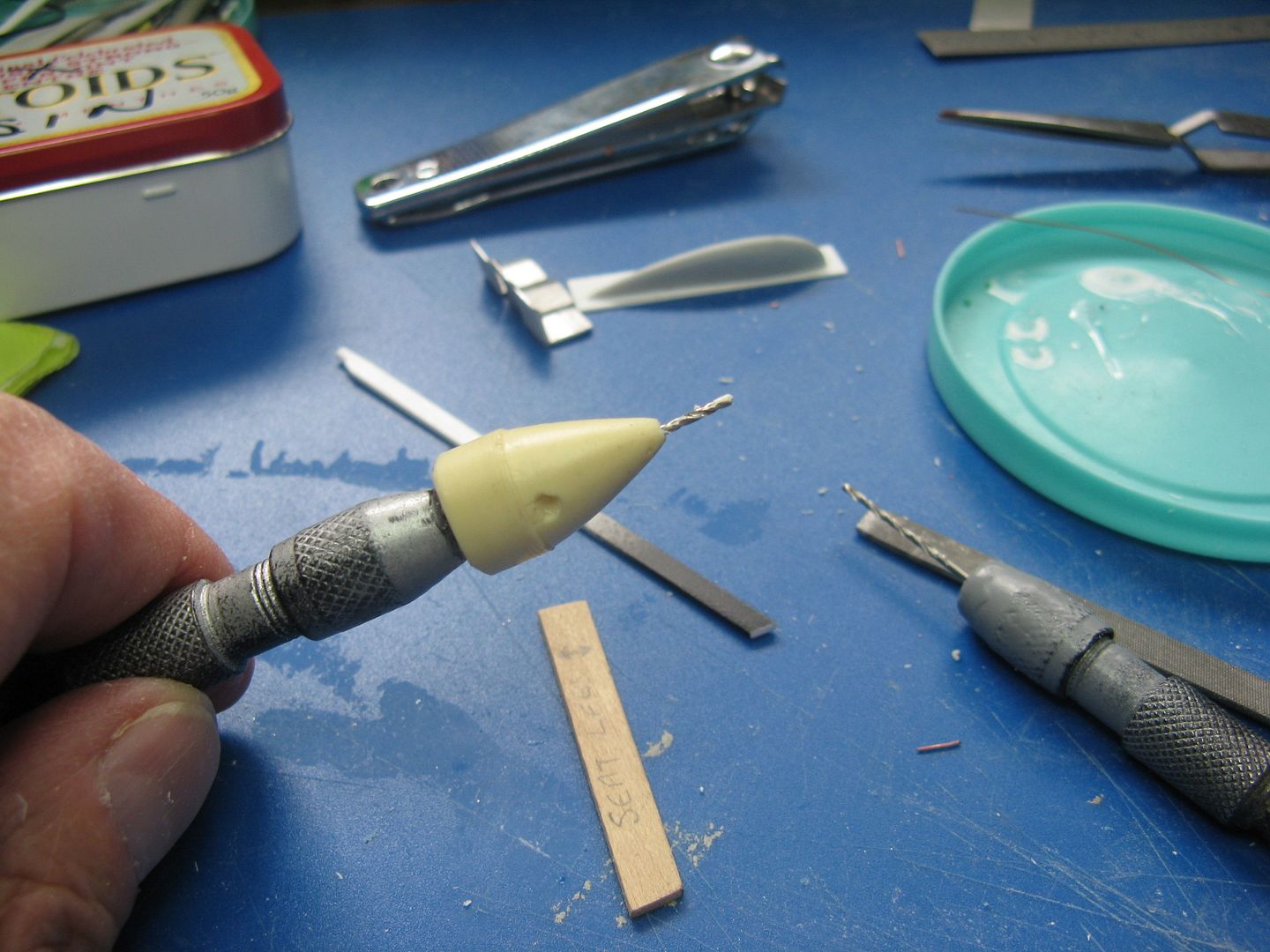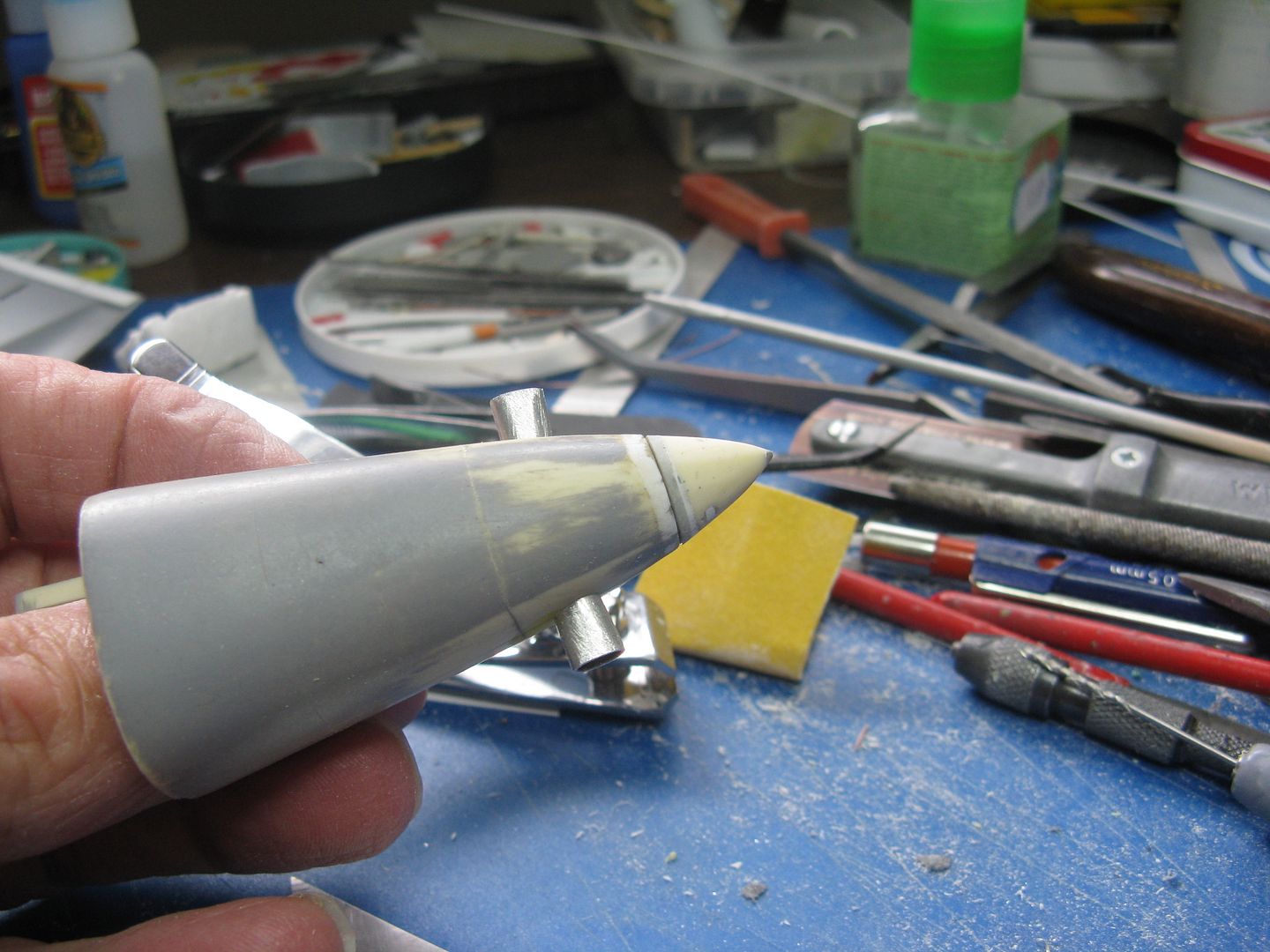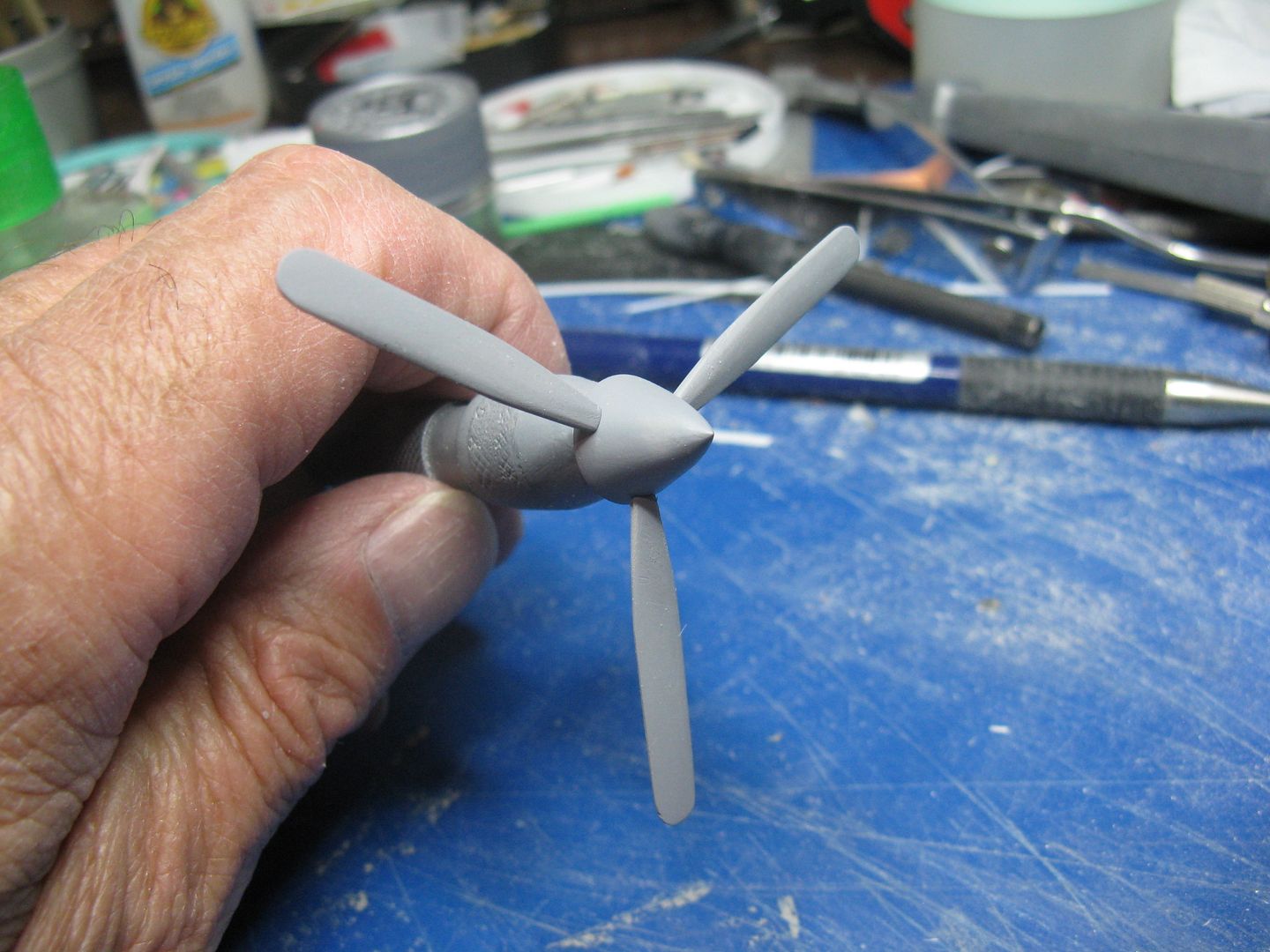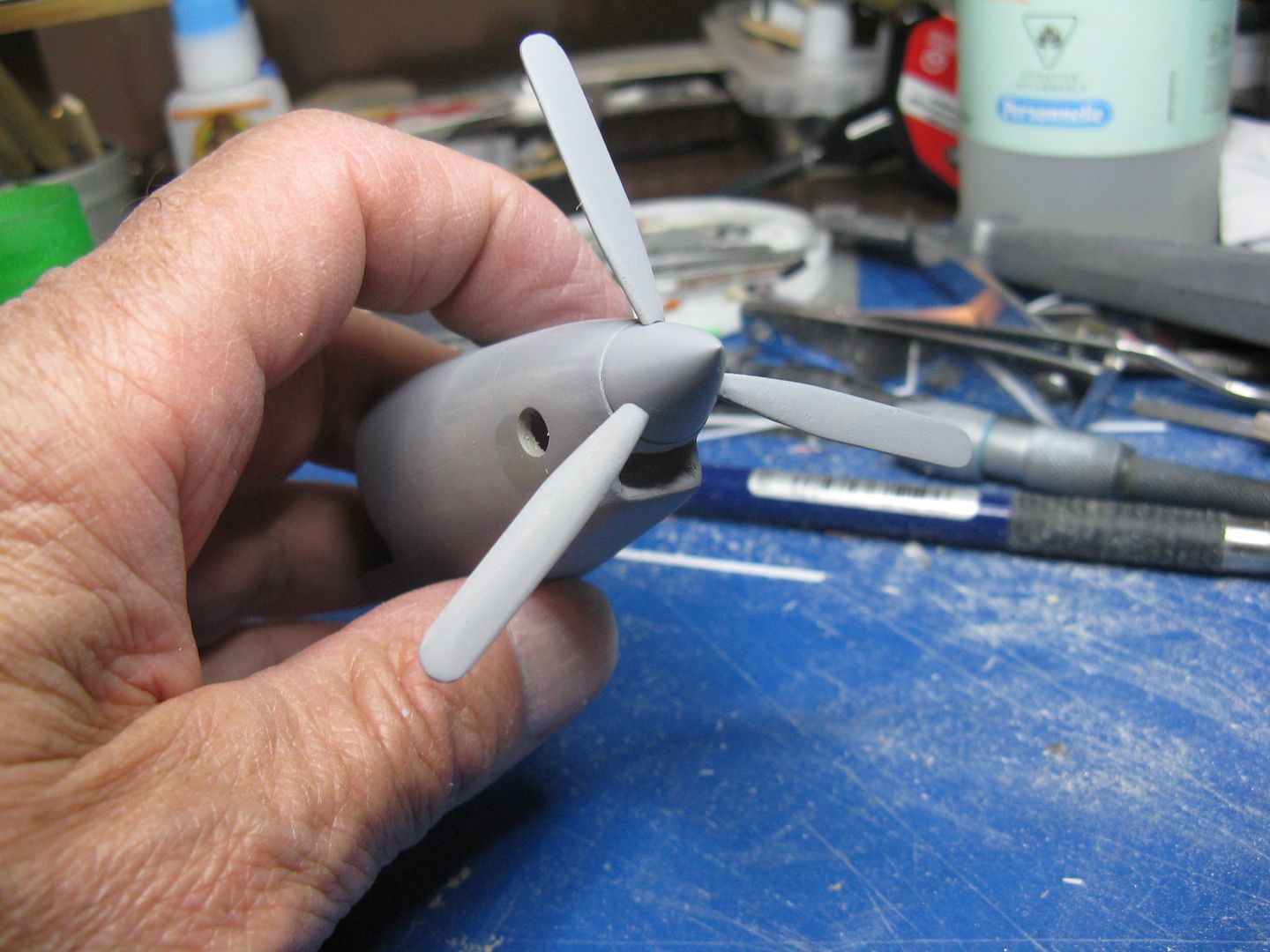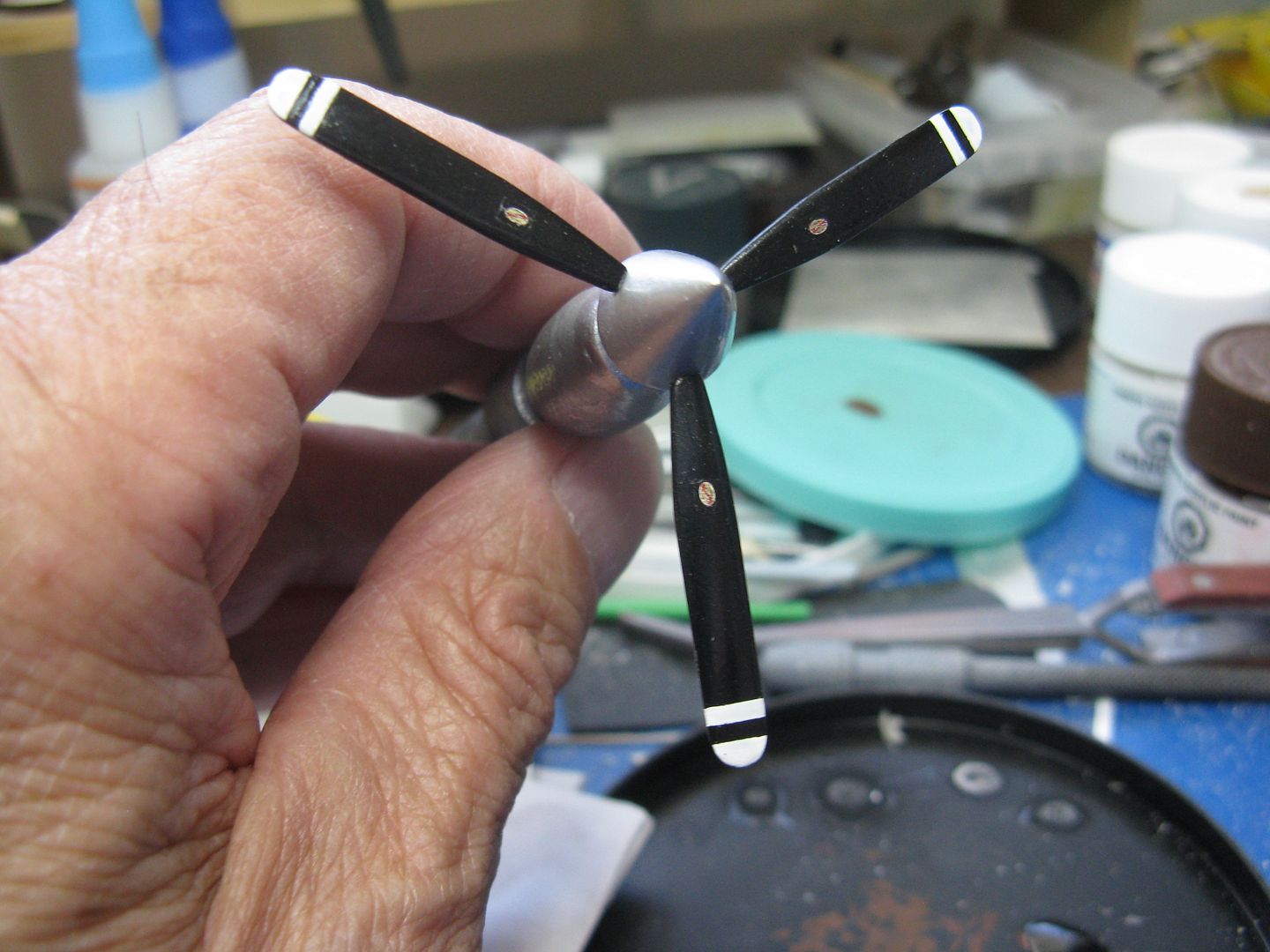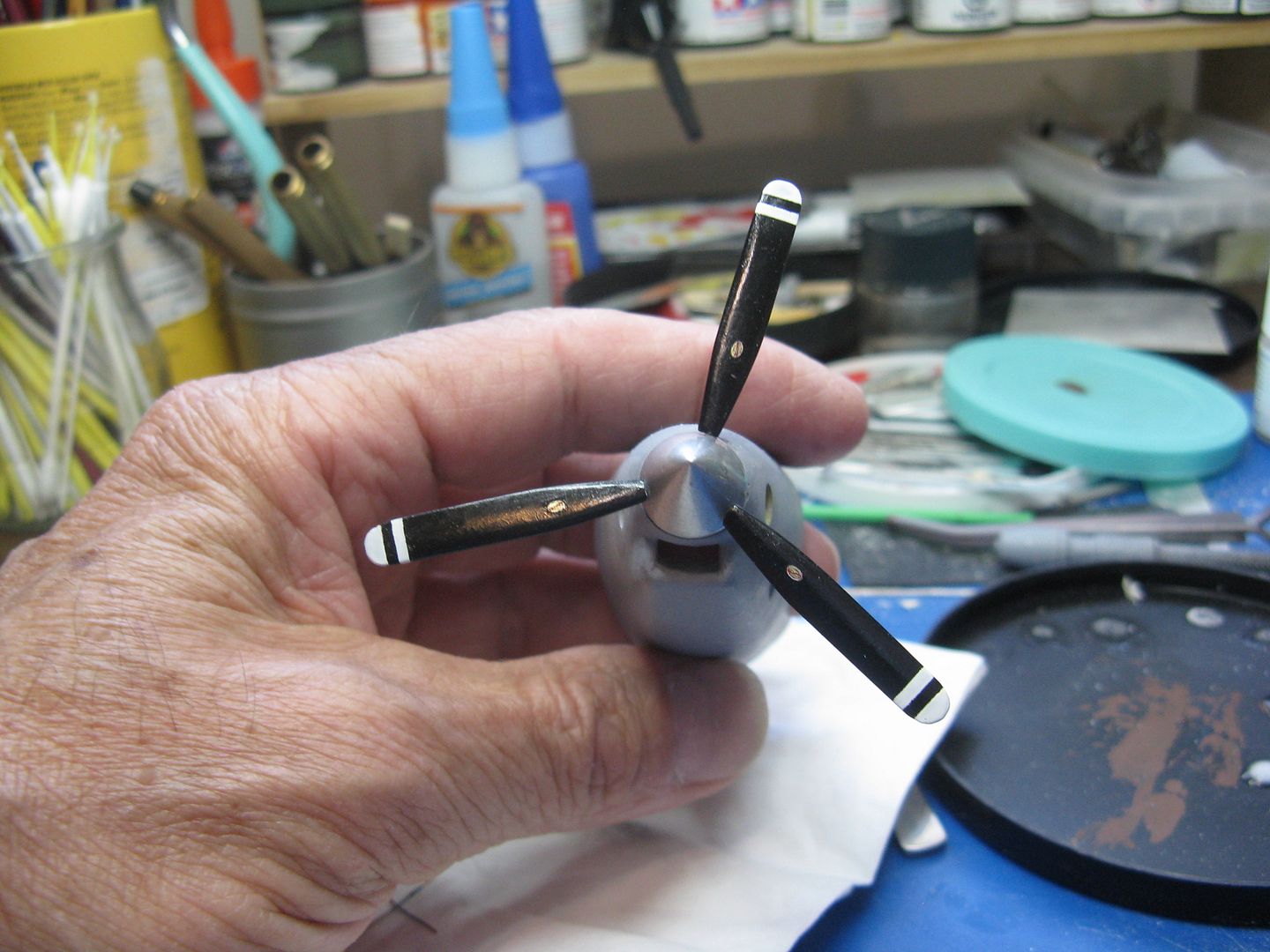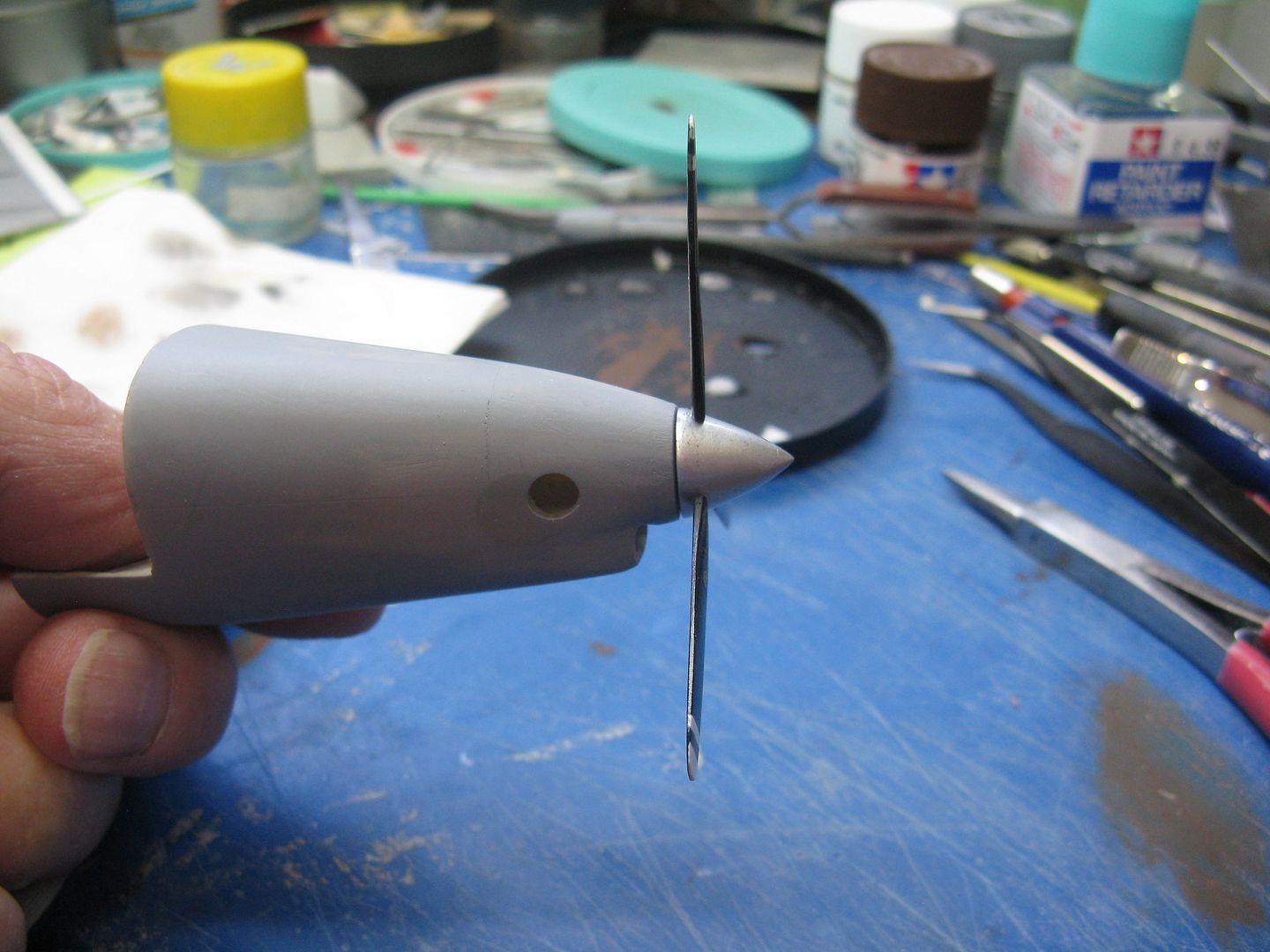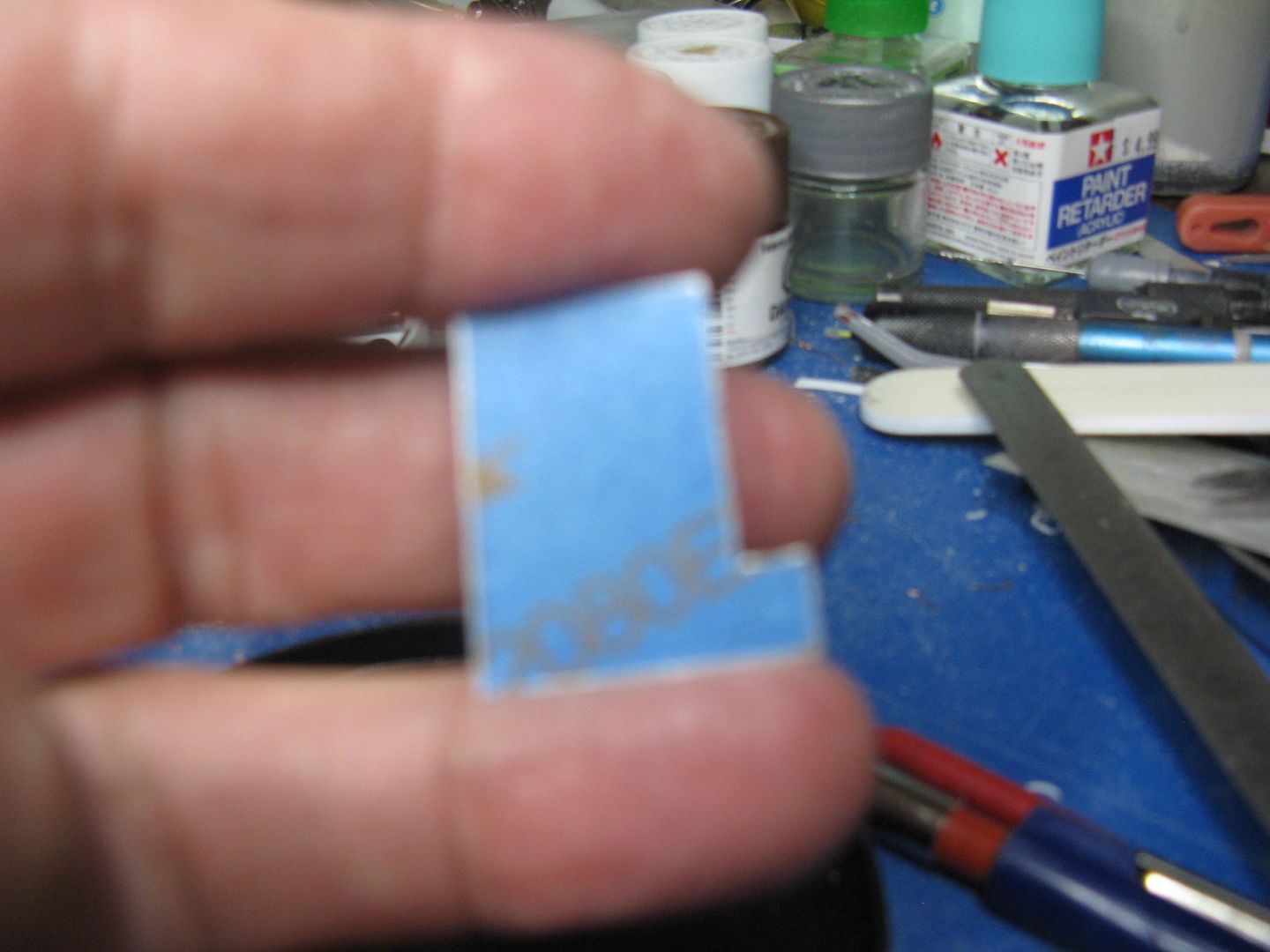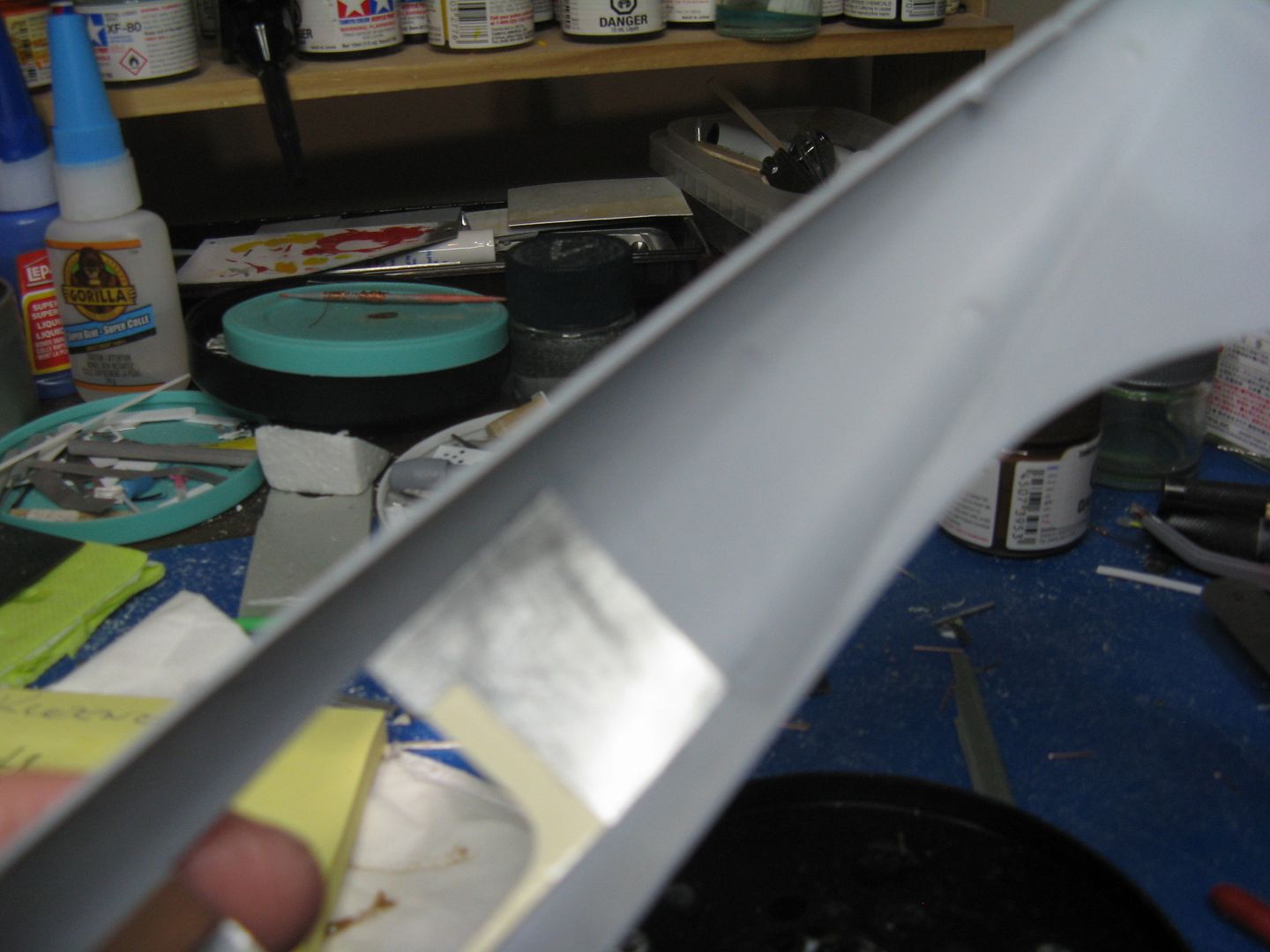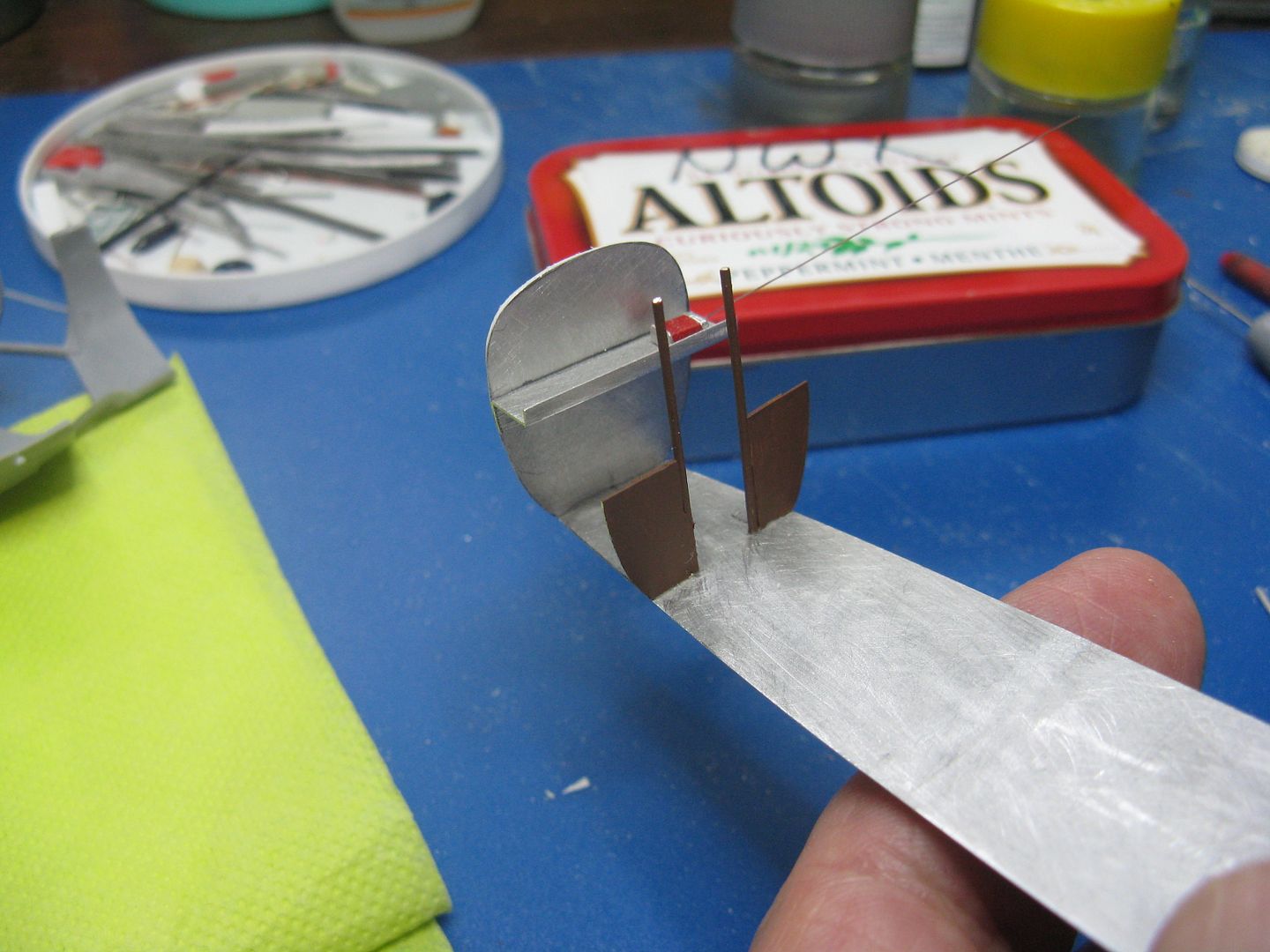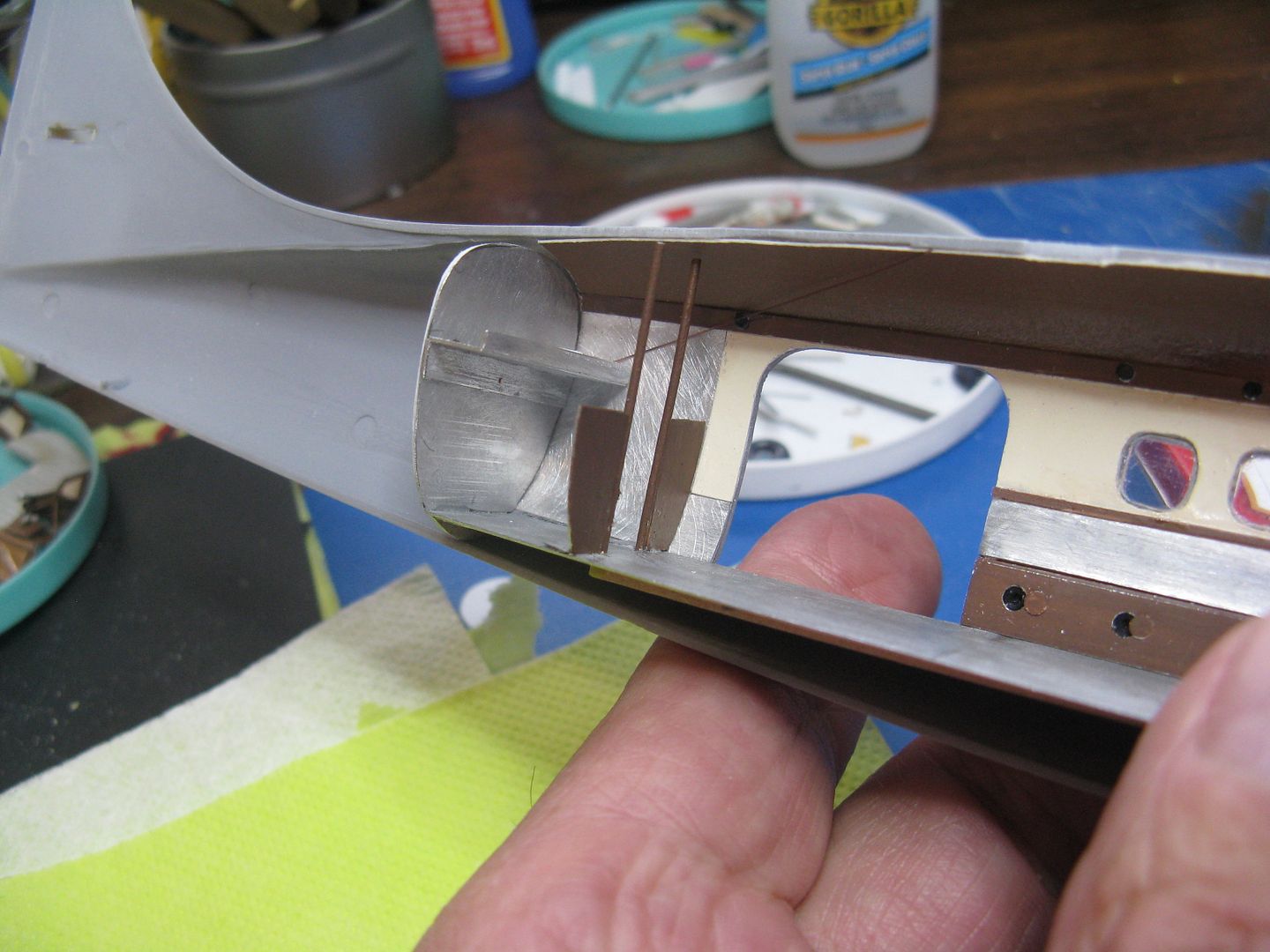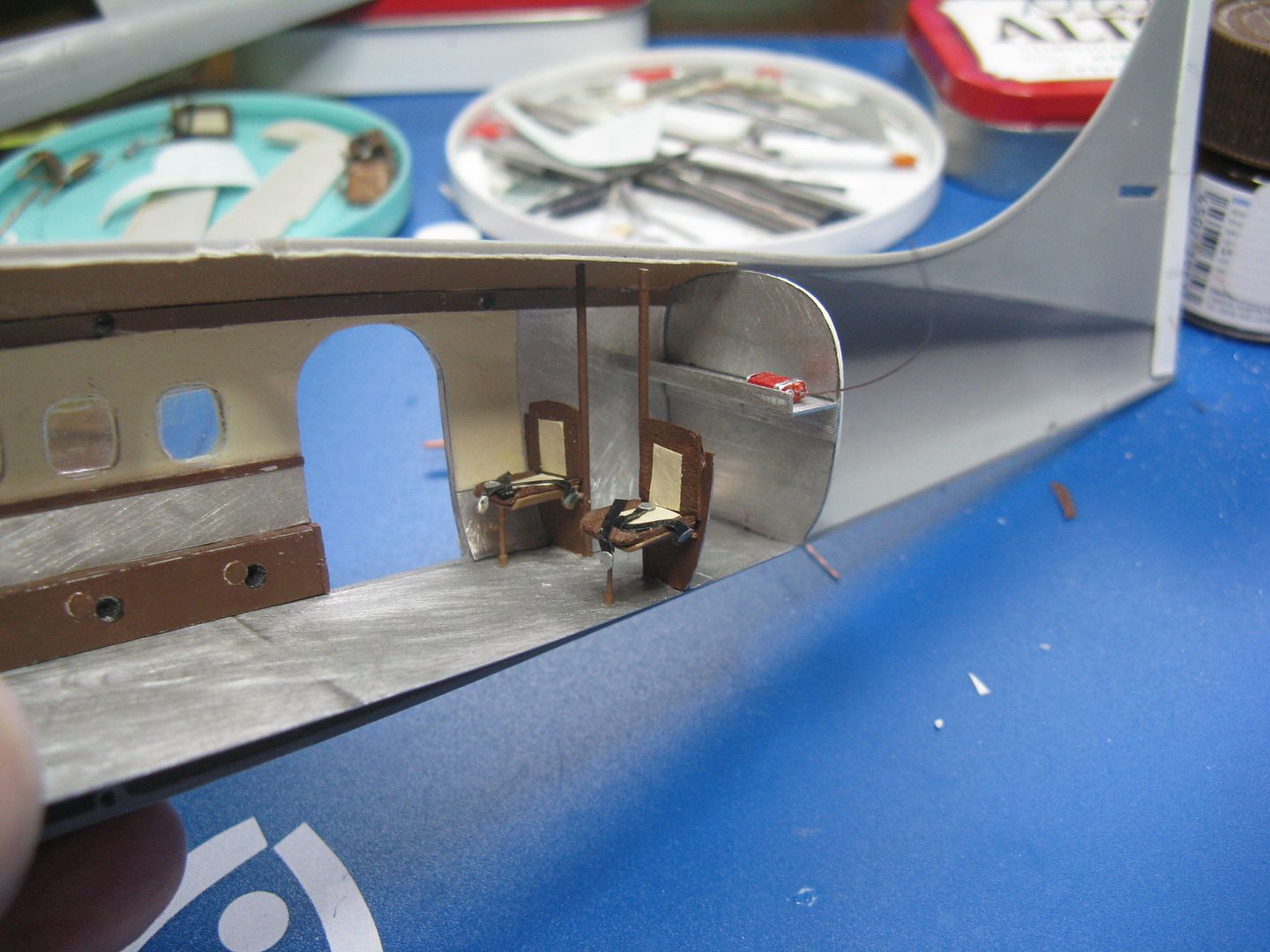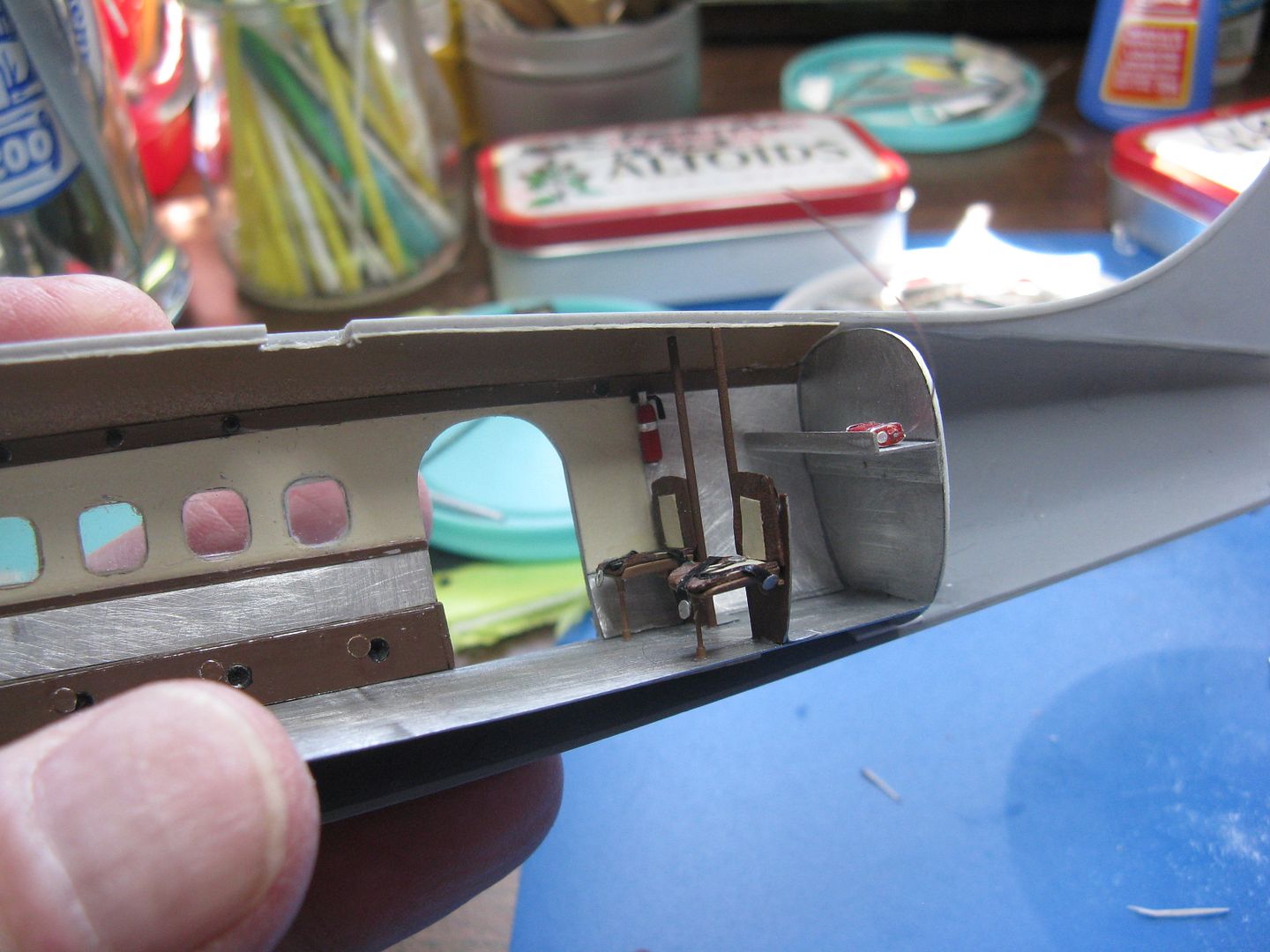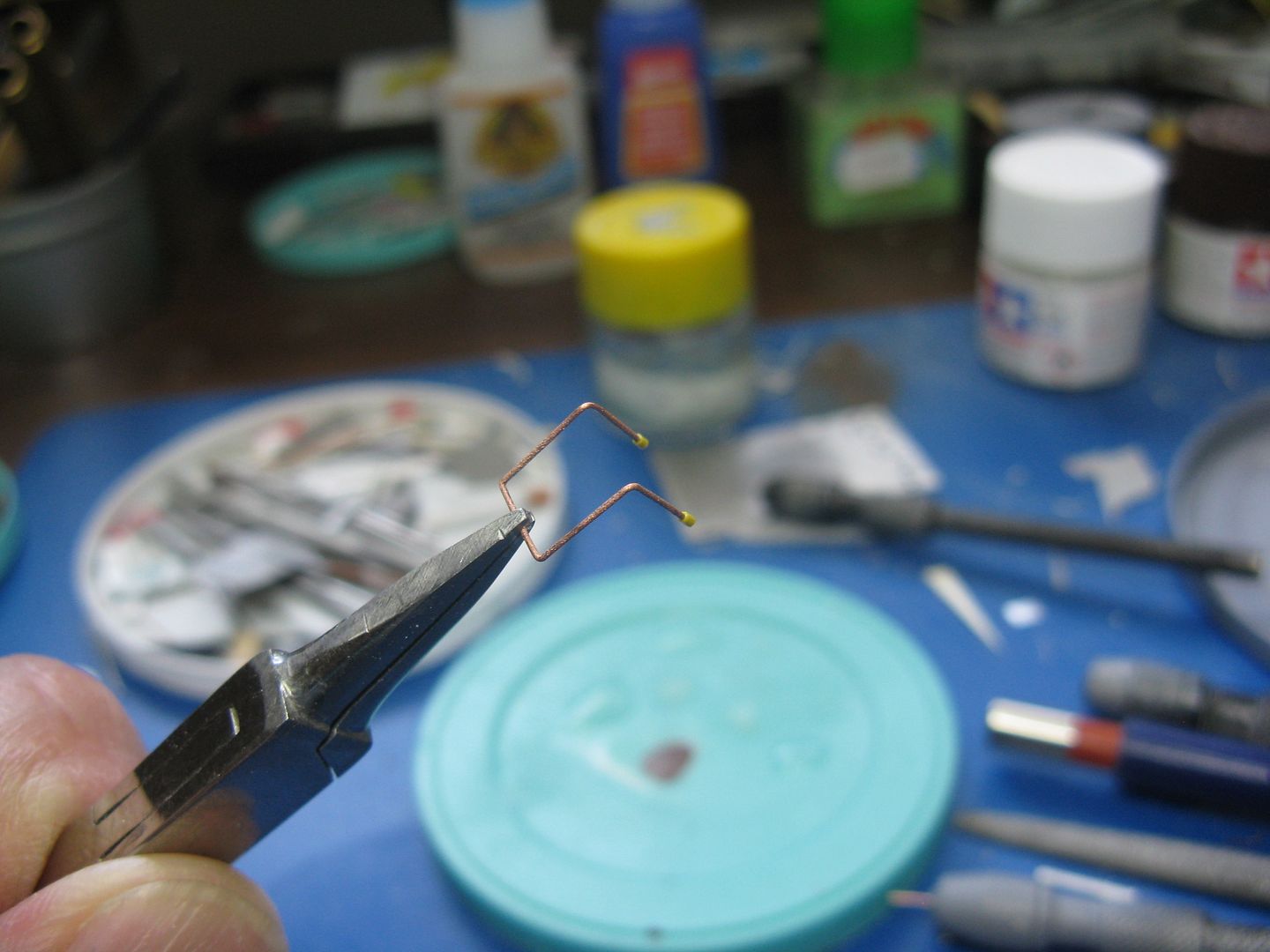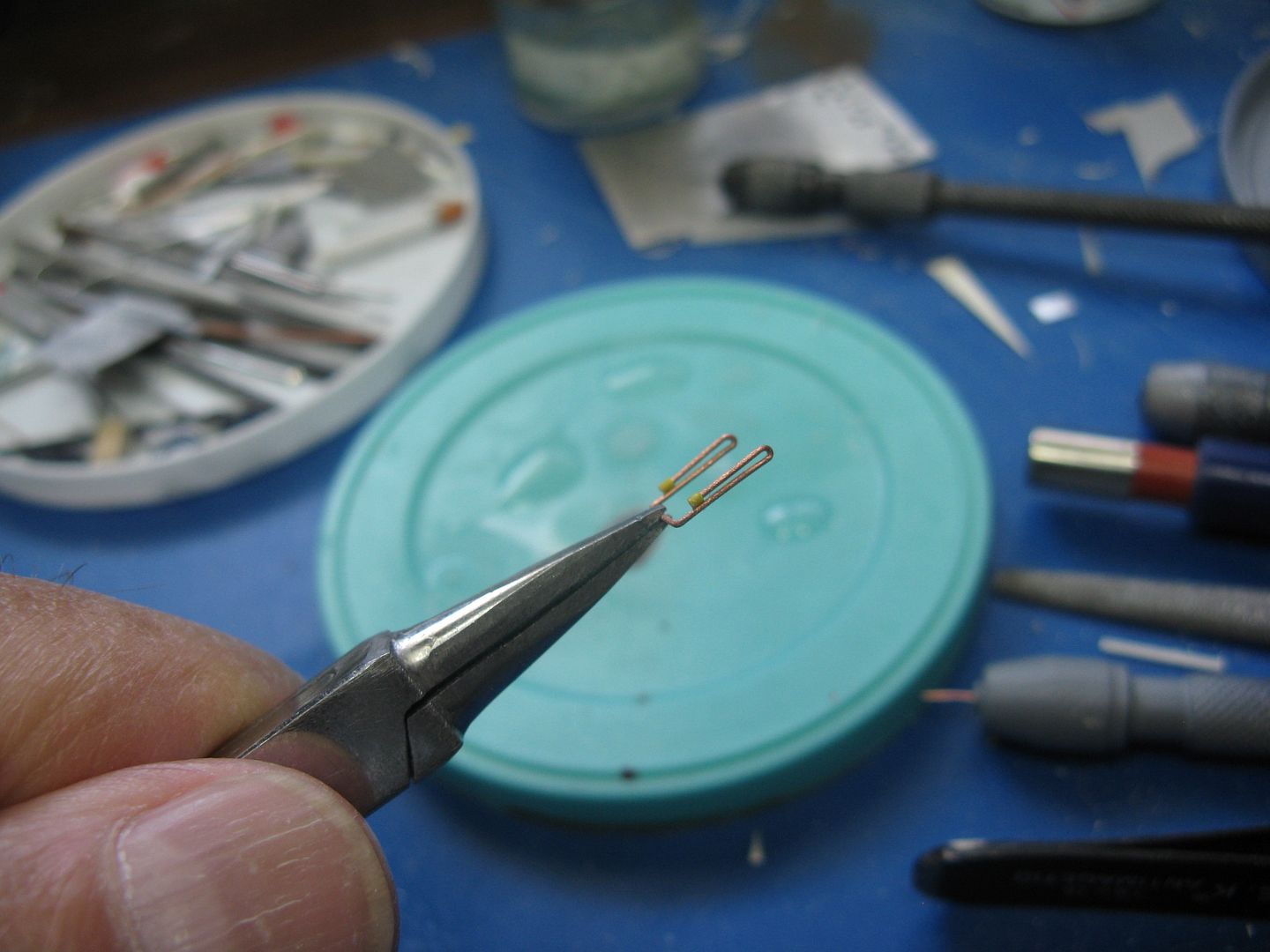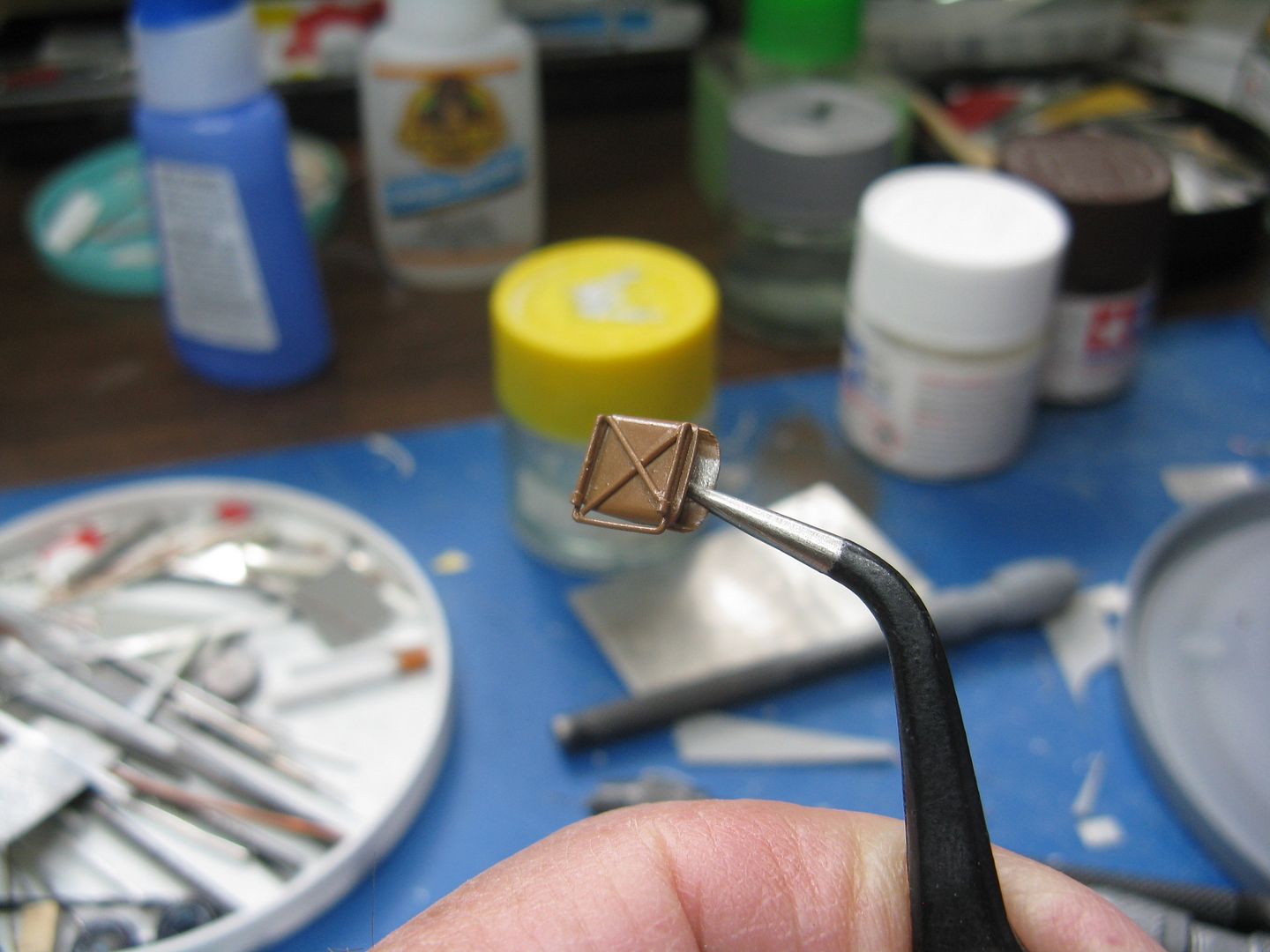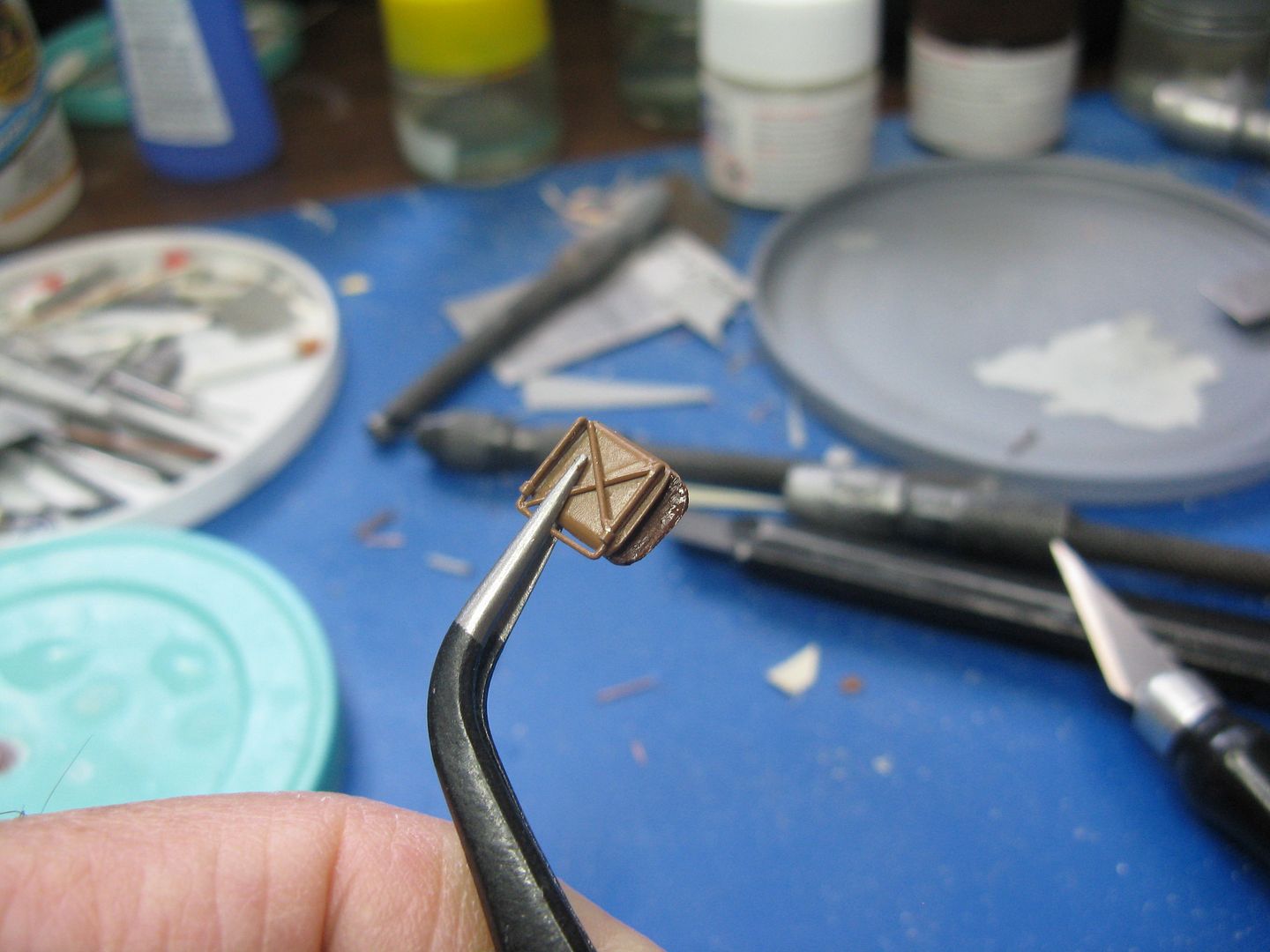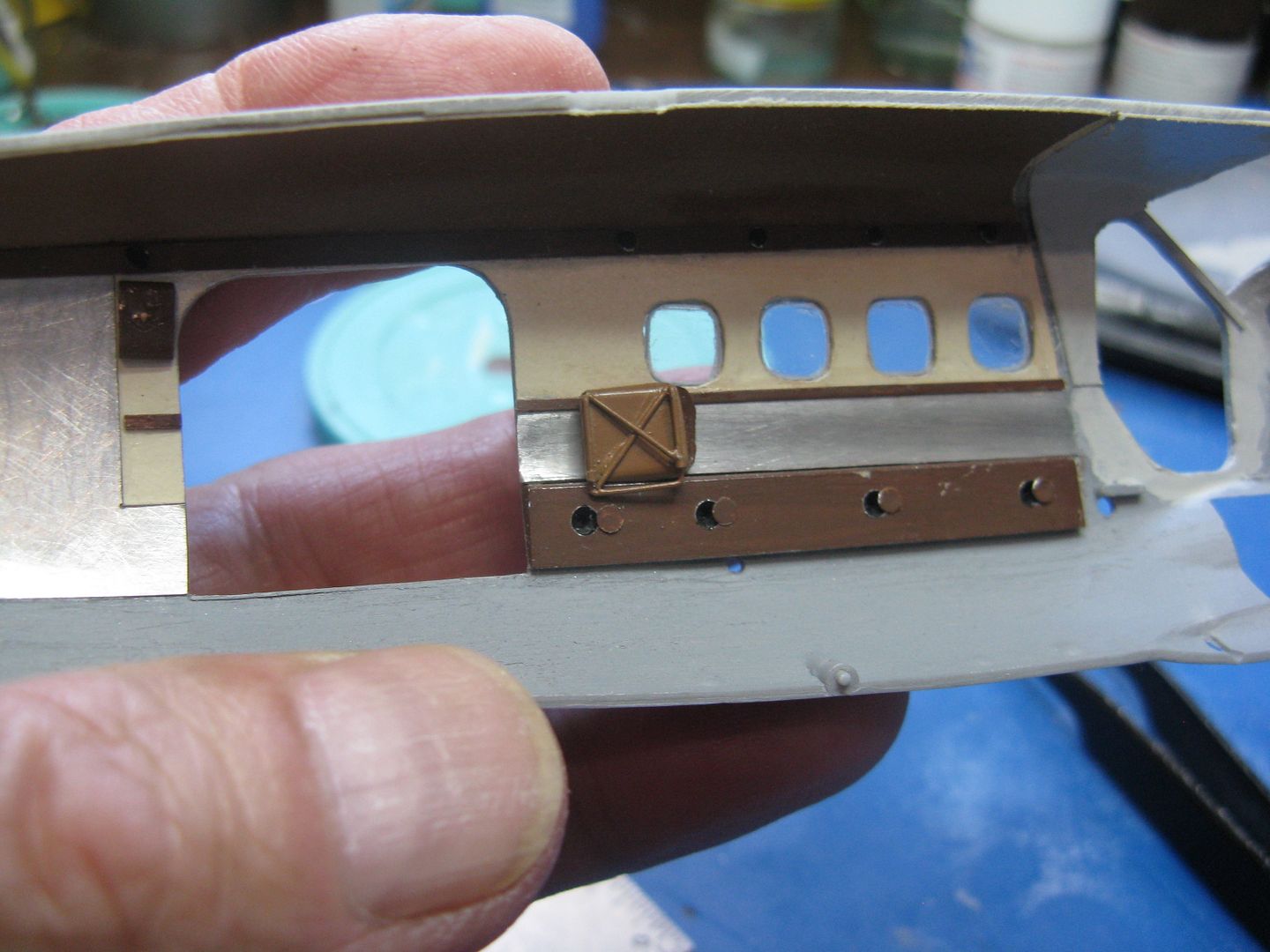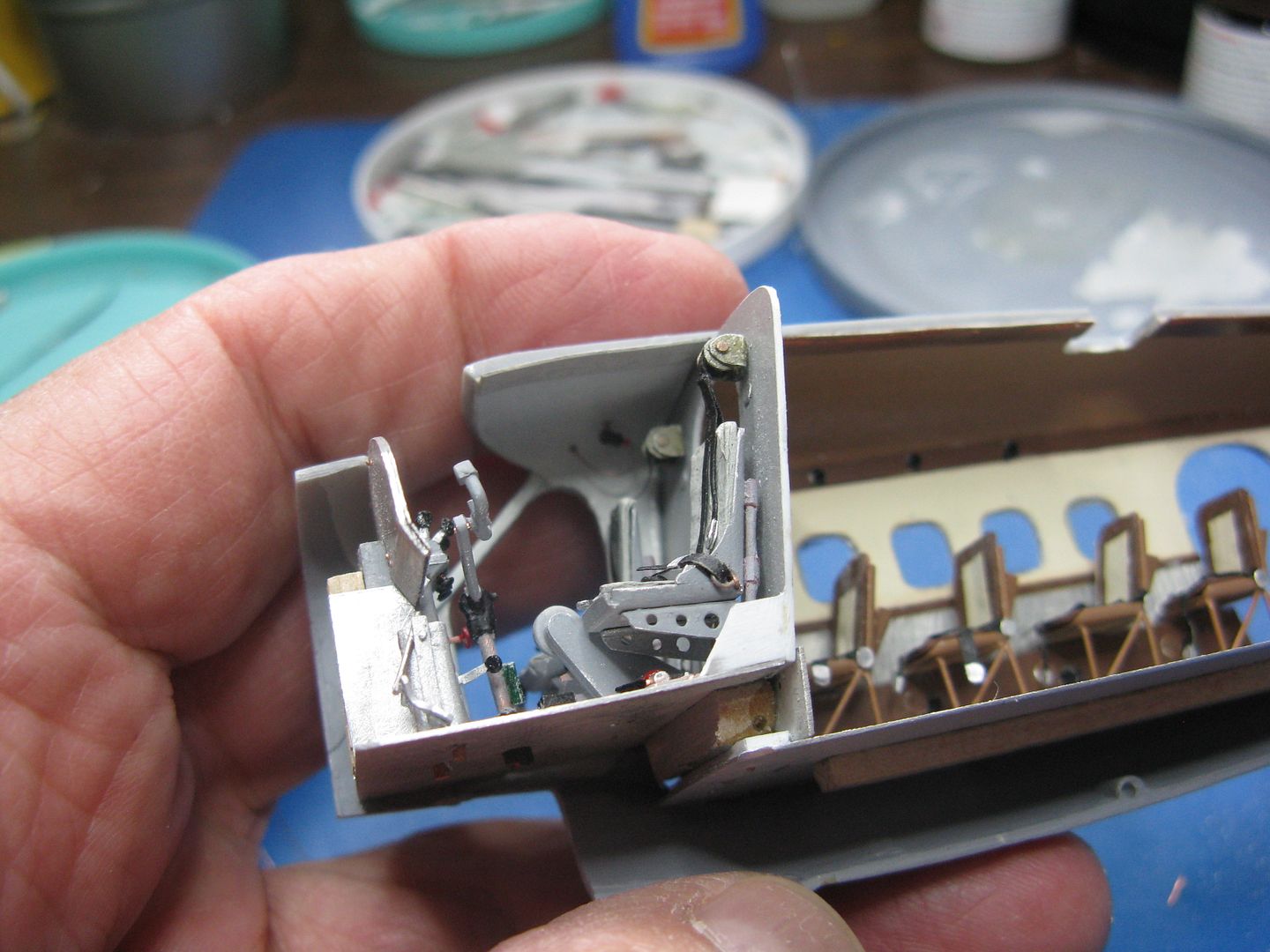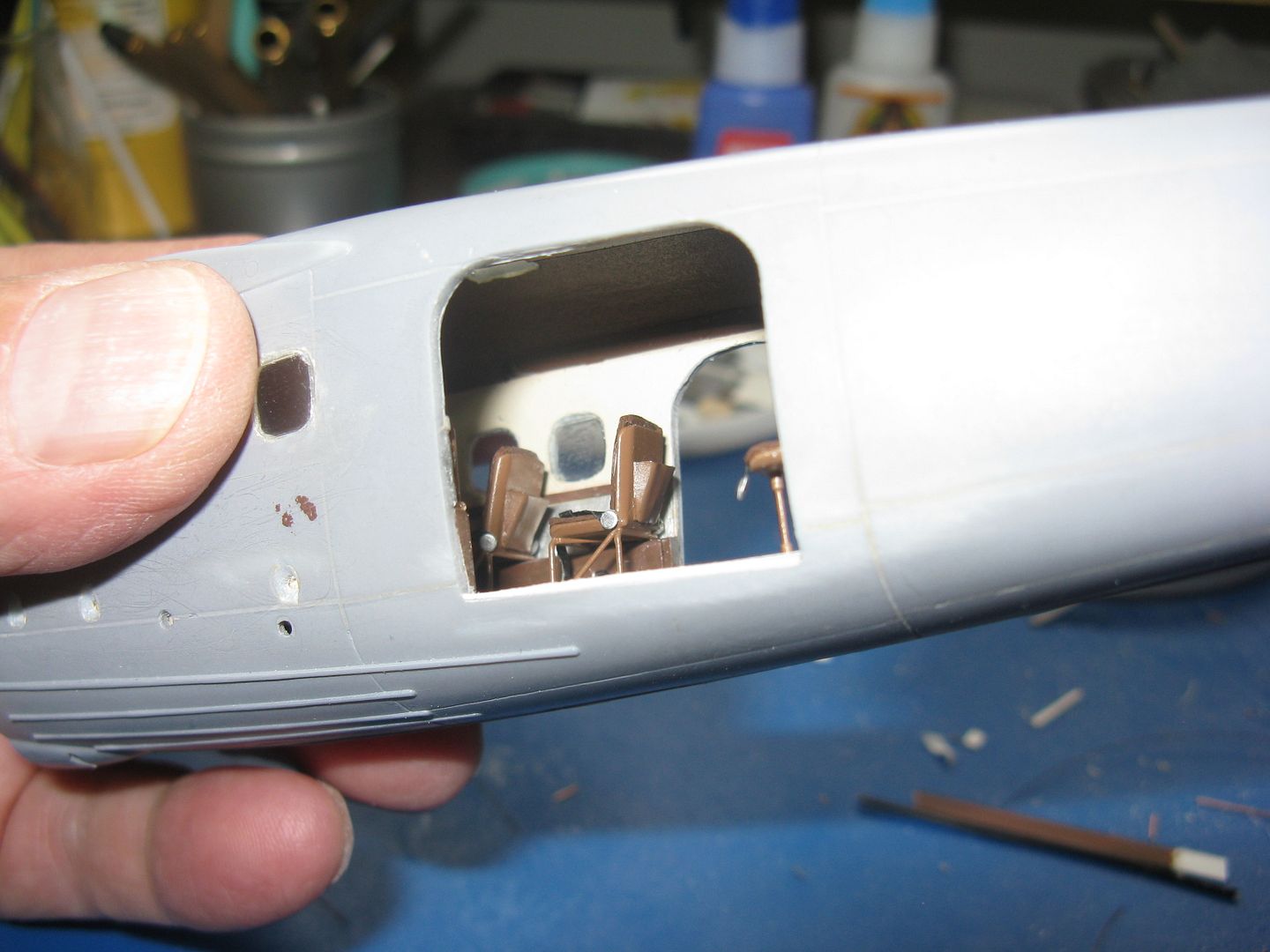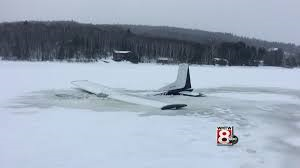Thanks for the kind comments fellas.
I haven gotten much work done lately, we were out of town for 10 days. I've started the interior, beginning with the seats. The cabin has a total of nine seats, seven of which are attached to the cabin sidewall at the top of the cabin heater duct that runs down either side. Three seats on the left and four on the right. The two remaining seats are attached to the bulkhead at the rear of the cabin. All seats fold upward leaving the floor area free for carrying freight. The Otter will carry a ton, and it you're lucky it won't be made up of 55-gallon gas barrels. Oh me aching back!
The seats are made similar to the cockpit ones, just smaller. And lower. Here's how I make 'em. Cut the metal the same as the cockpit, and bend accordingly.
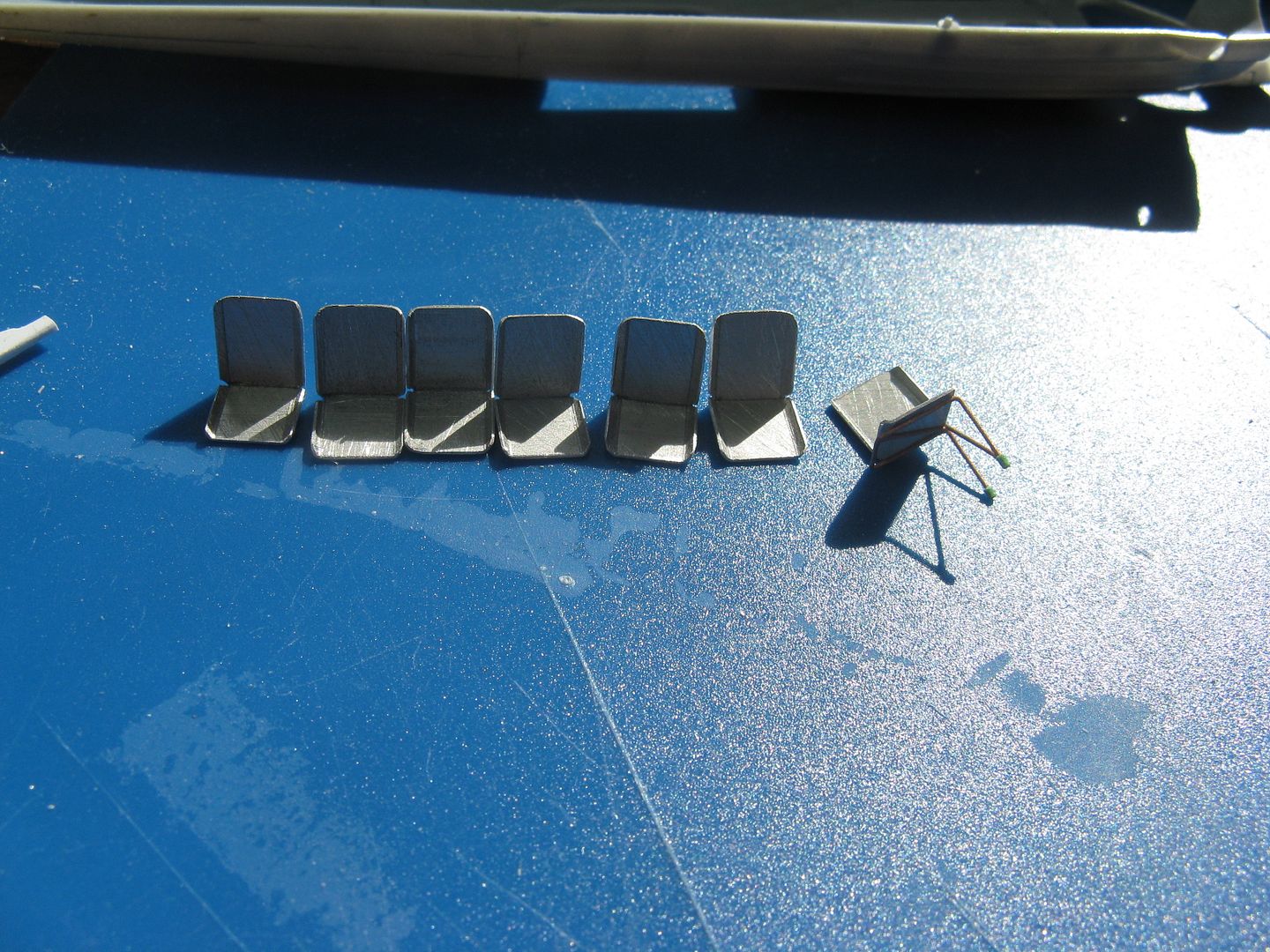
For this a jiglet is required to get the seat back rake and the legs all the same length.
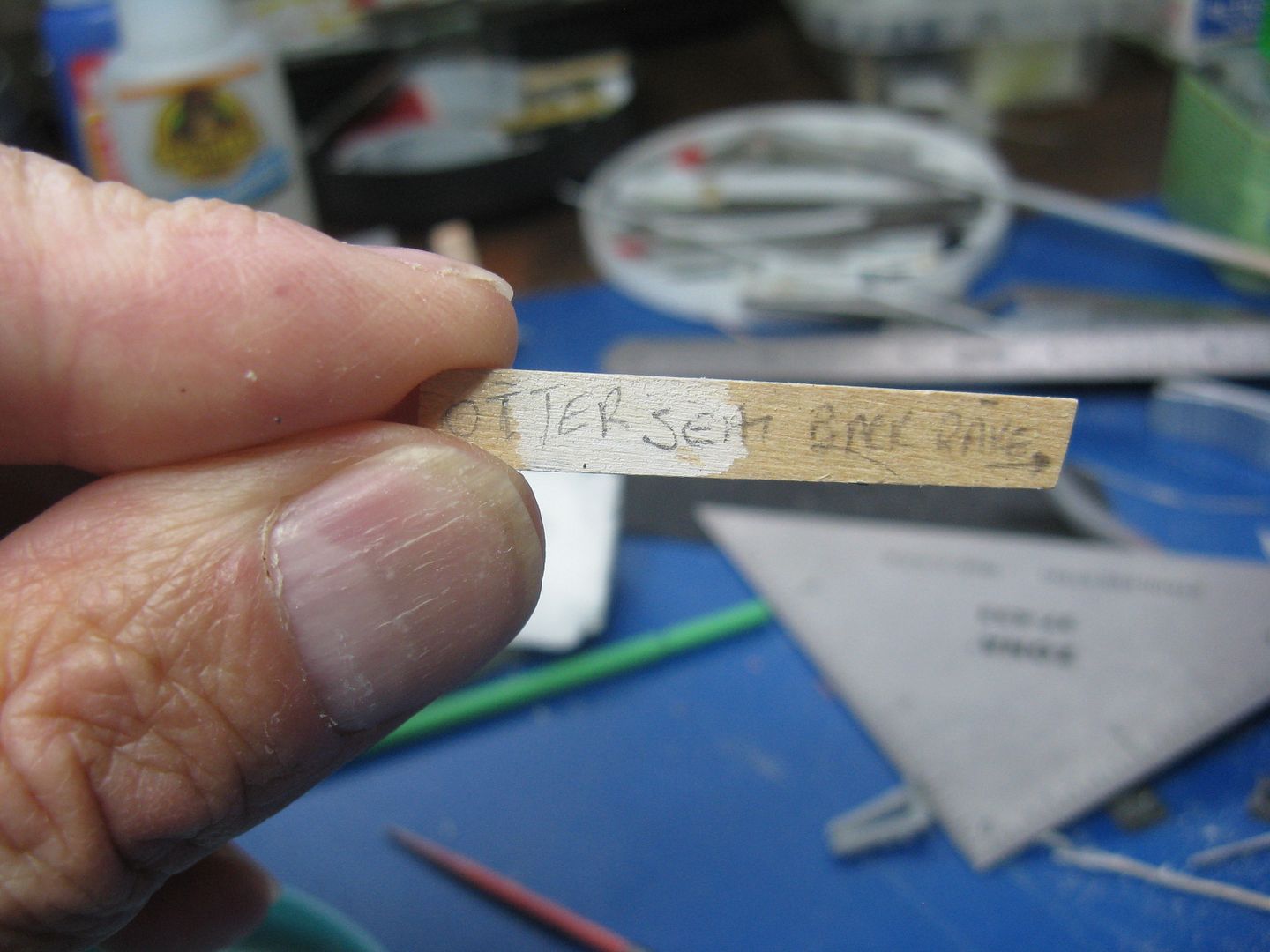
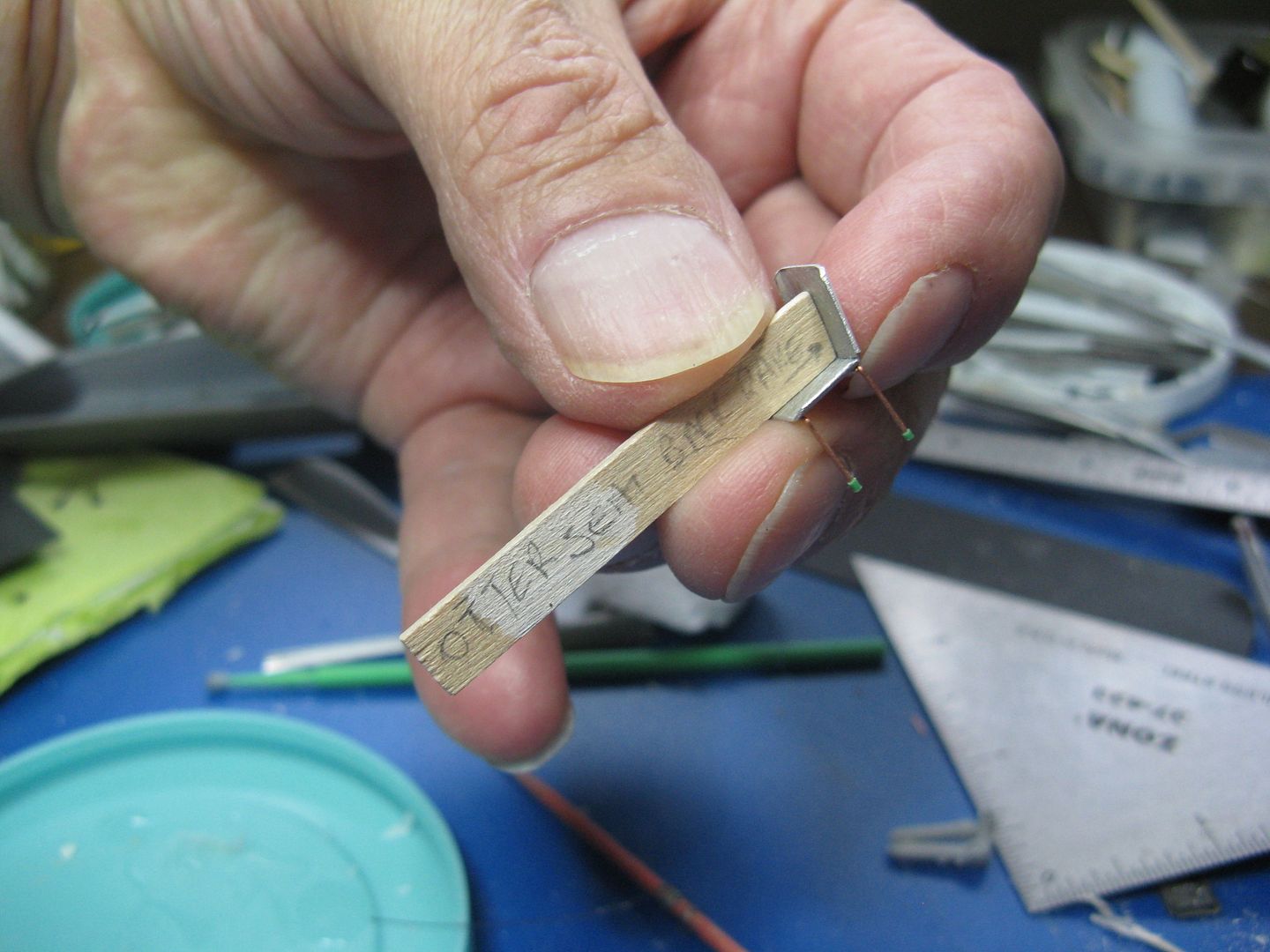
Once the backs are bent, on to the legs. Take a length of 24-gauge wire and bend it into a U-channel with a pair of pliers, like so:
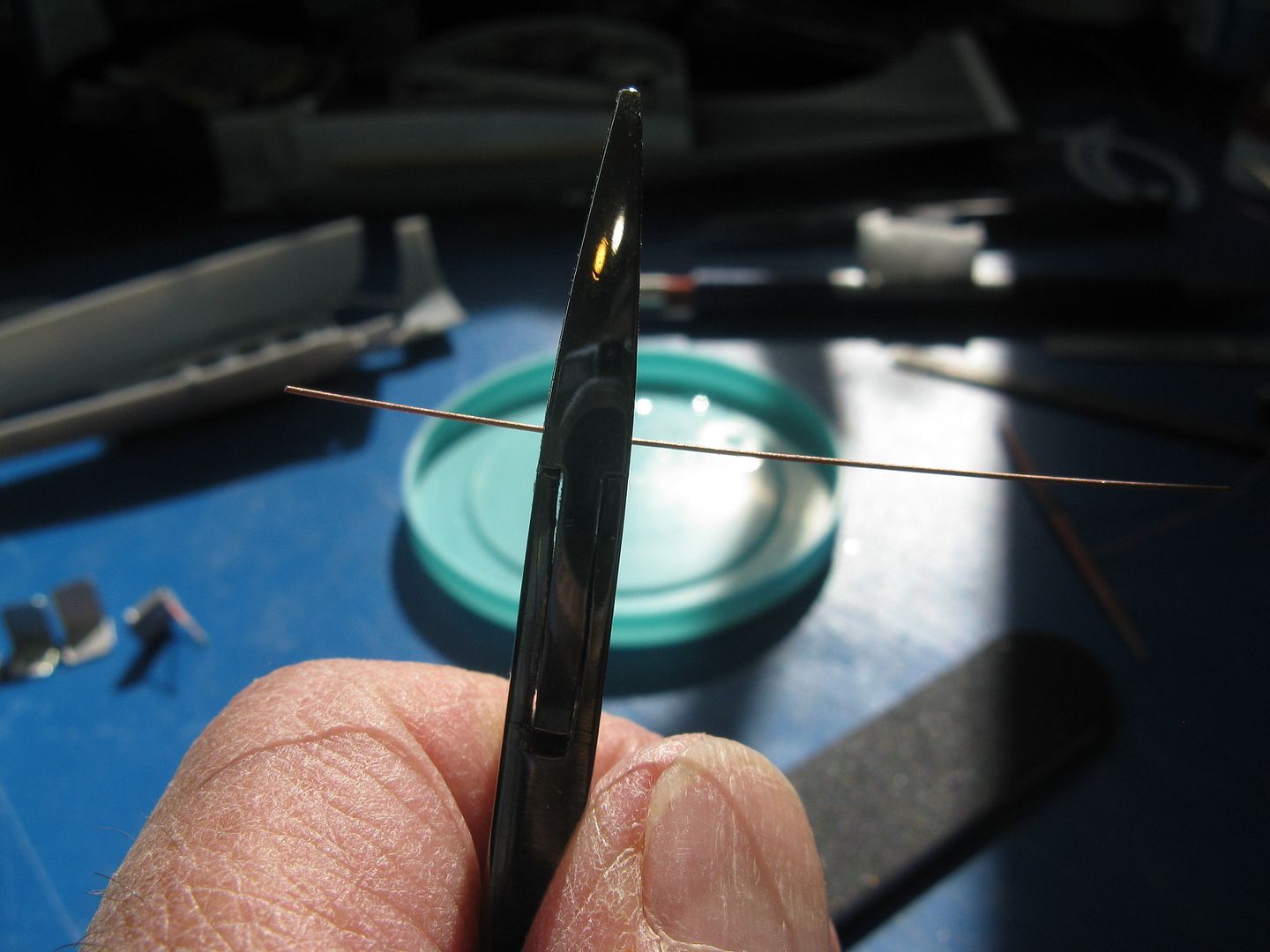

Bend both wires 90 degrees, like so, to create the legs.
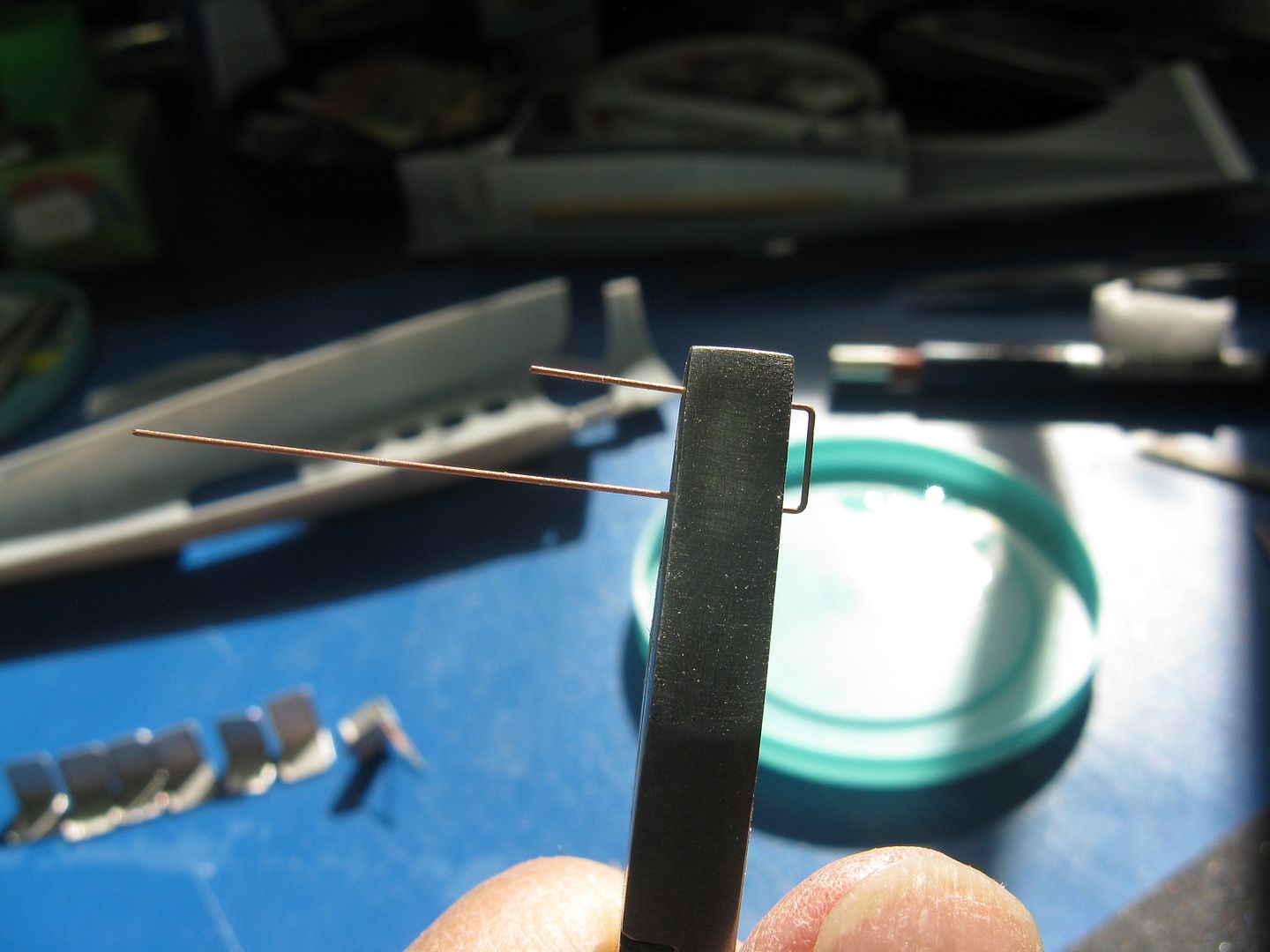
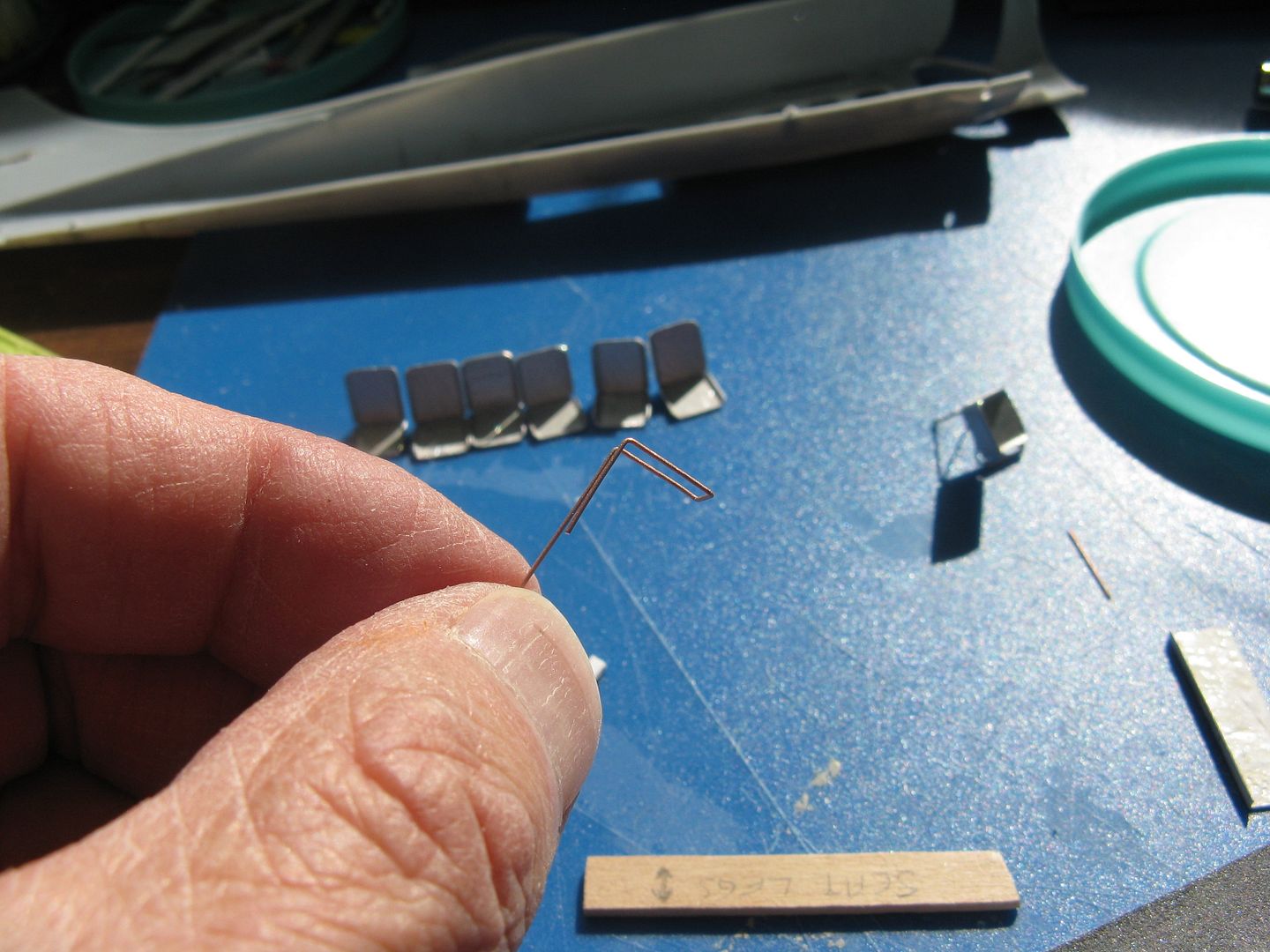
Clip off the excess wire and glue the legs to the bottom of the seat pan.
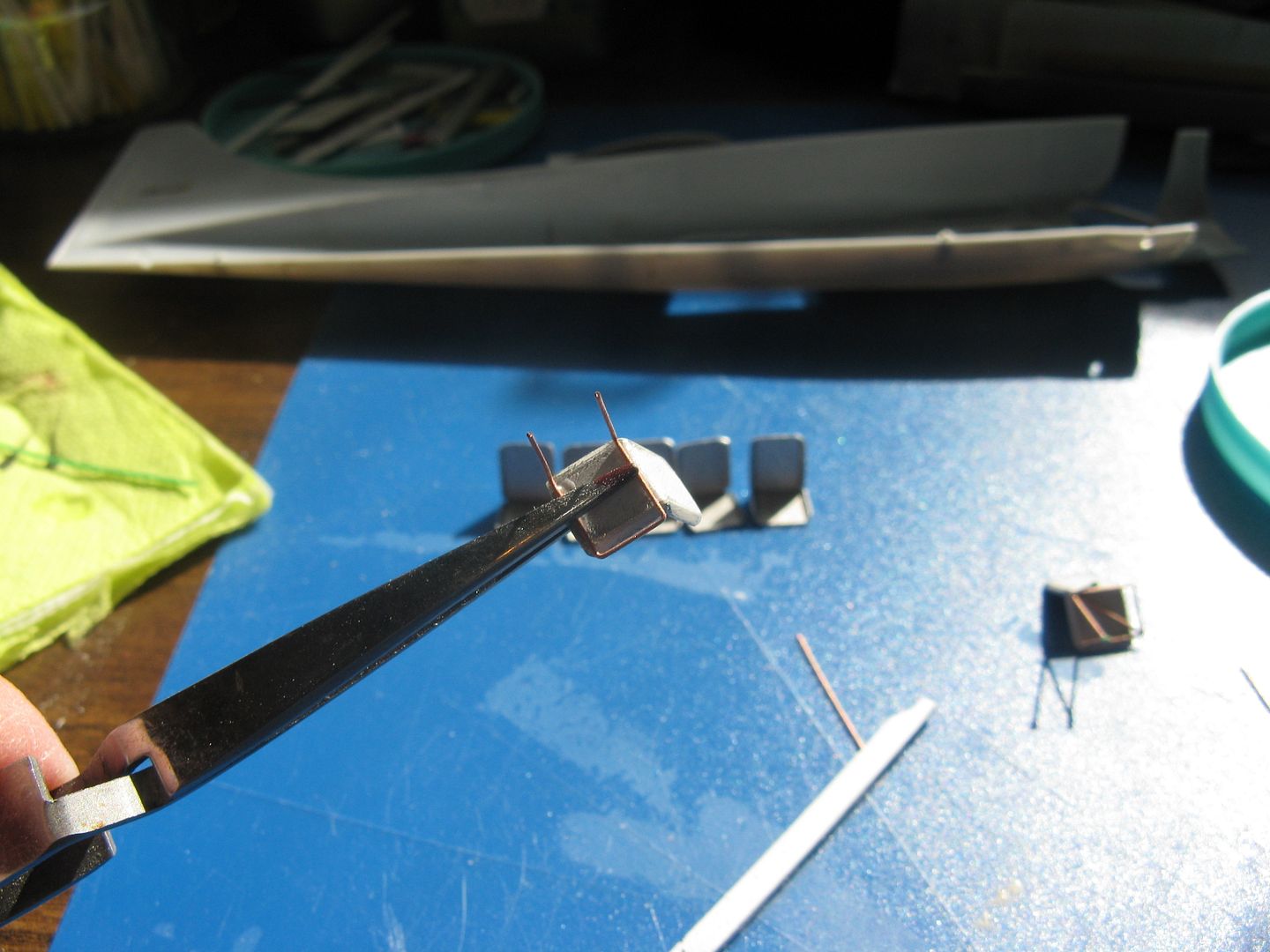
There is a method in the madness. The width of that jiglet corresponds to the length of the seat legs:

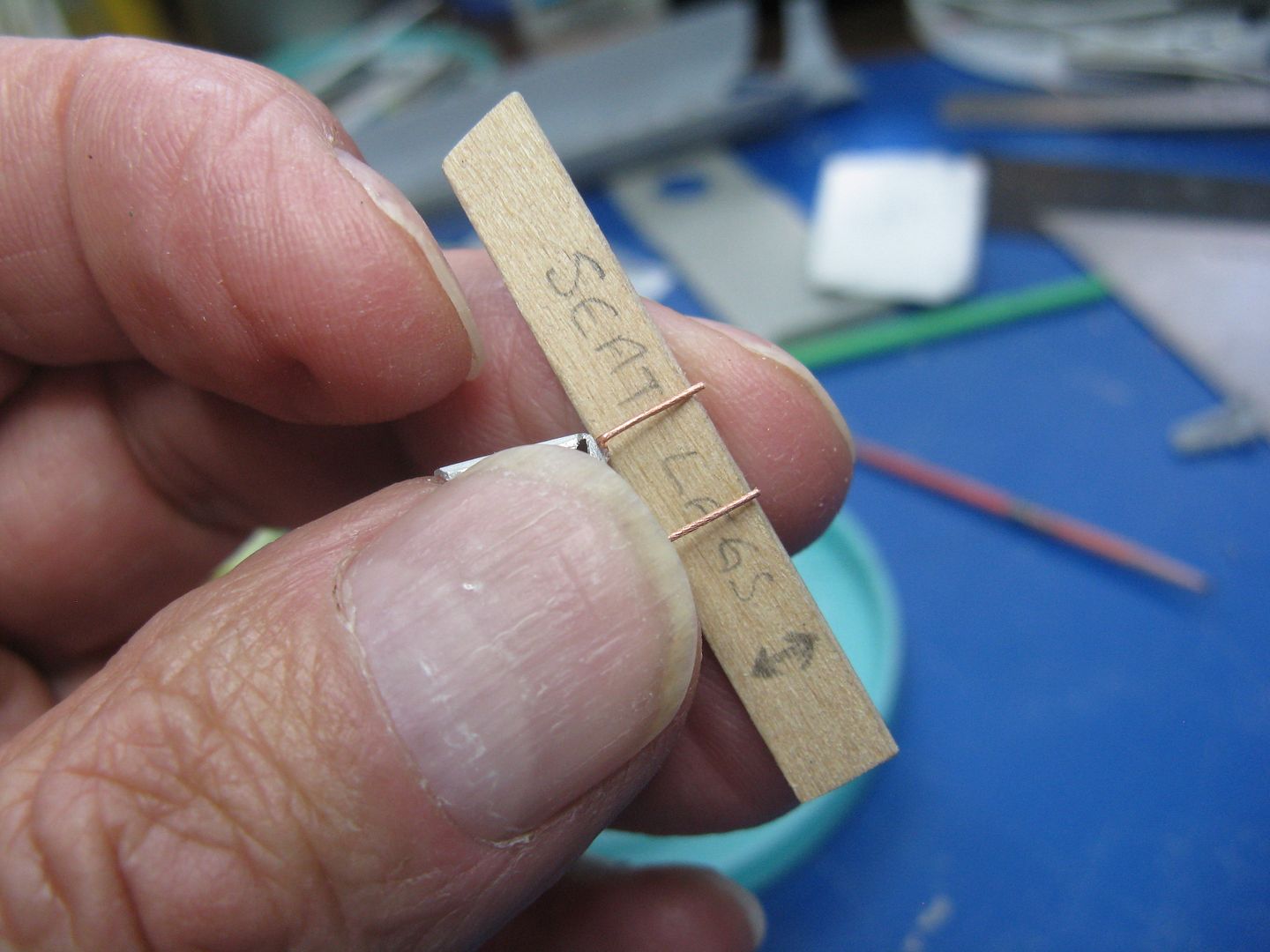
Here's what the heater duct looks like along the cabin sidewall. The seat will be attached to the top of the duct. There are fittings with hinge points on the real McCoy, but I shall simply glue the suckers in place. The duct is simply a length of scrap aluminum, cut and bent to shape and glued in place.
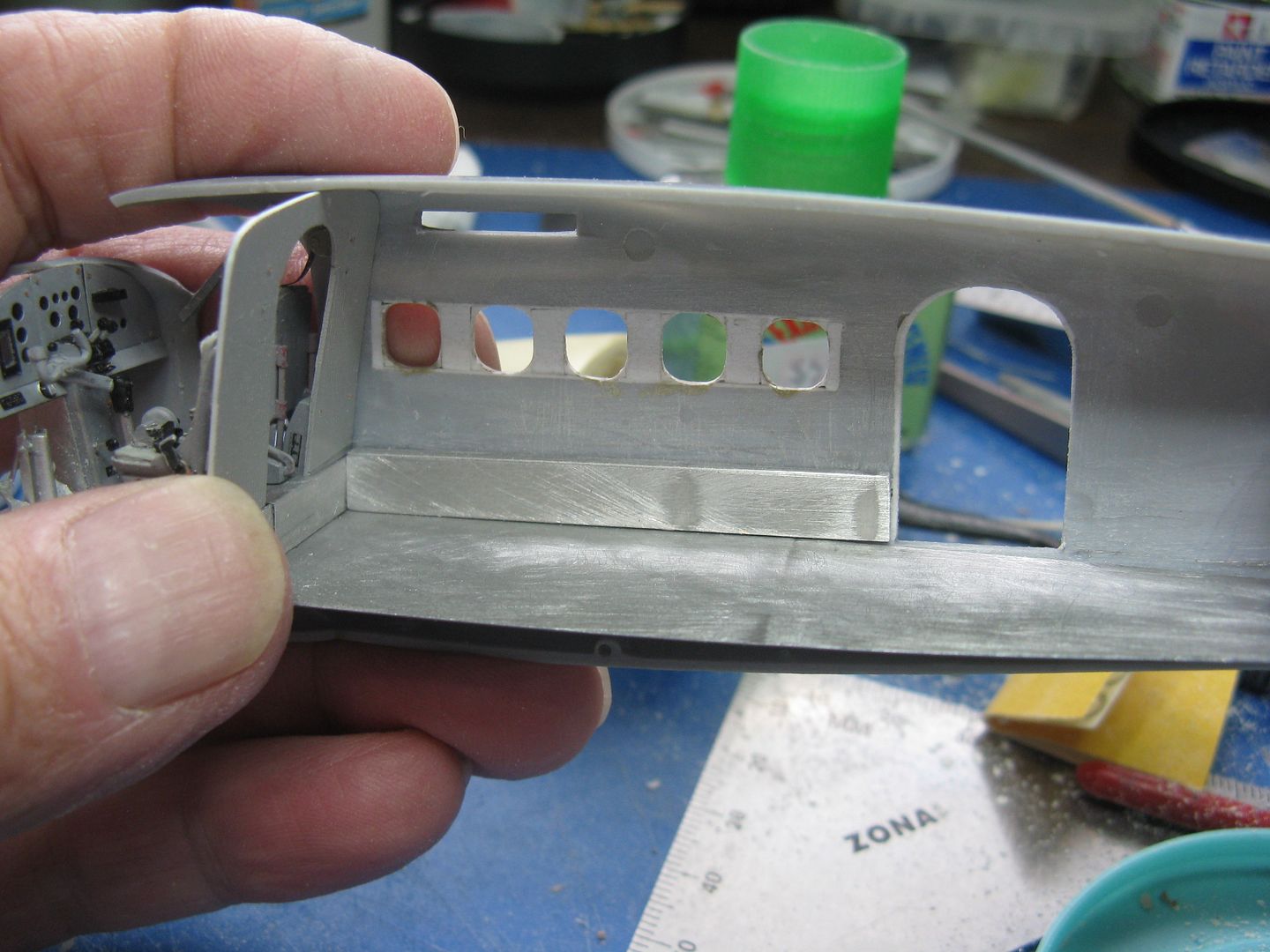

And there ya go, one bare seat minus cushions, seat belt and the seat back pocket, dry fitted in place. I added a tiny bit of wire insulation to the end of each leg to represent the ferrule that holds the seat leg to the floor, and a short length of wire as the N-brace between the front and rear leg.
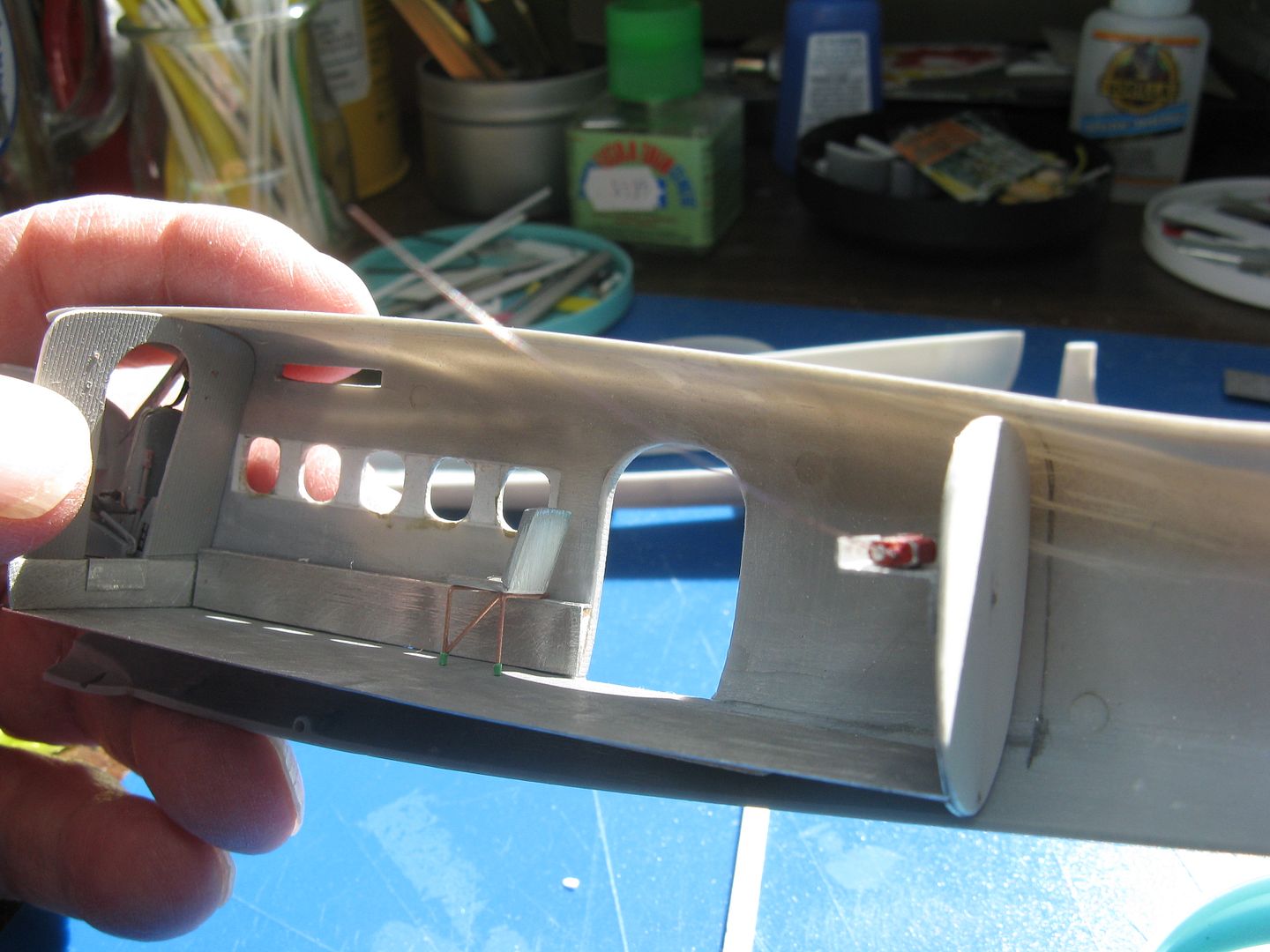
I've begun work on the prop, and also more work on the interior. I'll probably post more pics tomorrow.
I haven gotten much work done lately, we were out of town for 10 days. I've started the interior, beginning with the seats. The cabin has a total of nine seats, seven of which are attached to the cabin sidewall at the top of the cabin heater duct that runs down either side. Three seats on the left and four on the right. The two remaining seats are attached to the bulkhead at the rear of the cabin. All seats fold upward leaving the floor area free for carrying freight. The Otter will carry a ton, and it you're lucky it won't be made up of 55-gallon gas barrels. Oh me aching back!
The seats are made similar to the cockpit ones, just smaller. And lower. Here's how I make 'em. Cut the metal the same as the cockpit, and bend accordingly.

For this a jiglet is required to get the seat back rake and the legs all the same length.


Once the backs are bent, on to the legs. Take a length of 24-gauge wire and bend it into a U-channel with a pair of pliers, like so:


Bend both wires 90 degrees, like so, to create the legs.


Clip off the excess wire and glue the legs to the bottom of the seat pan.

There is a method in the madness. The width of that jiglet corresponds to the length of the seat legs:


Here's what the heater duct looks like along the cabin sidewall. The seat will be attached to the top of the duct. There are fittings with hinge points on the real McCoy, but I shall simply glue the suckers in place. The duct is simply a length of scrap aluminum, cut and bent to shape and glued in place.


And there ya go, one bare seat minus cushions, seat belt and the seat back pocket, dry fitted in place. I added a tiny bit of wire insulation to the end of each leg to represent the ferrule that holds the seat leg to the floor, and a short length of wire as the N-brace between the front and rear leg.

I've begun work on the prop, and also more work on the interior. I'll probably post more pics tomorrow.

